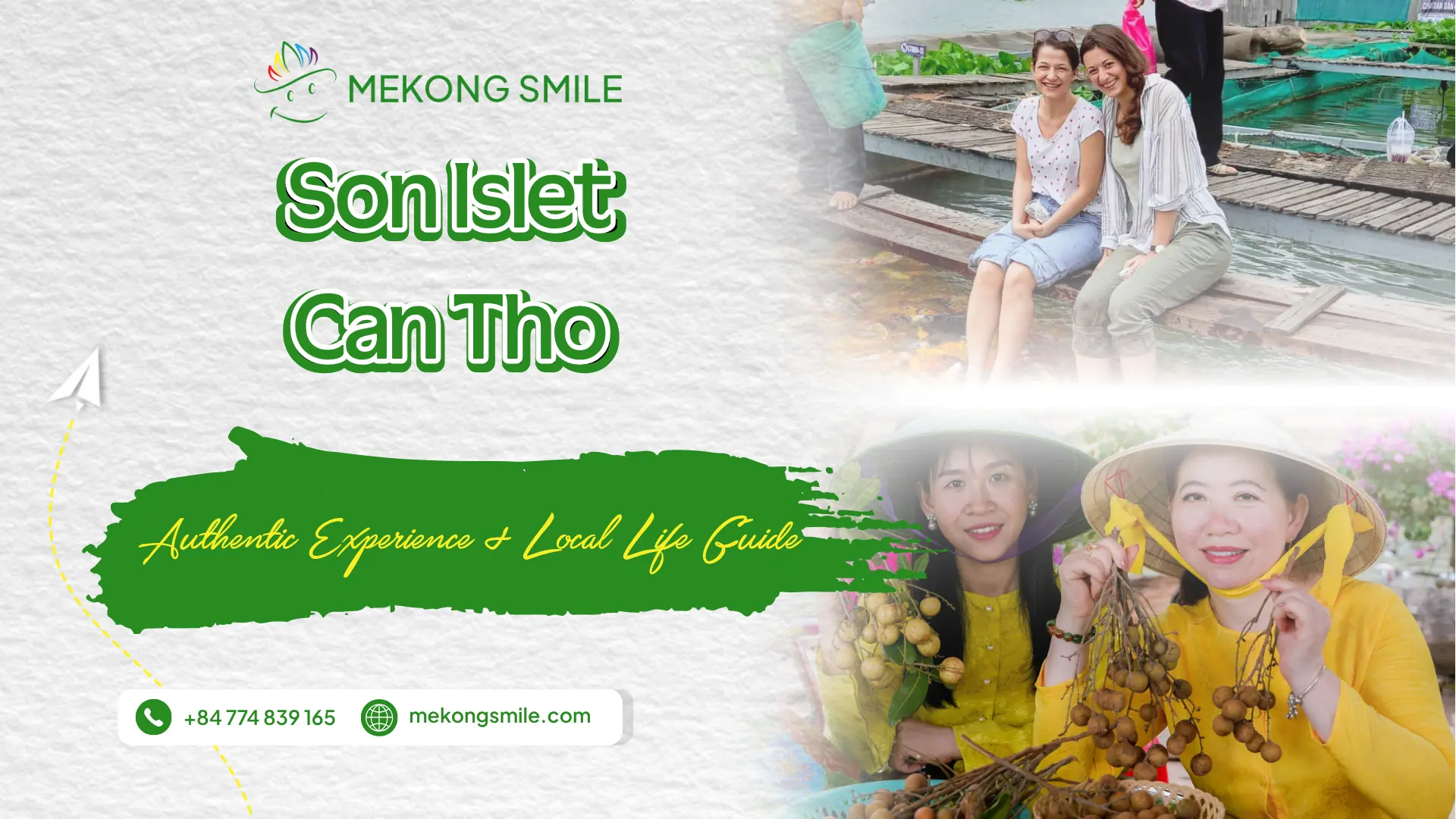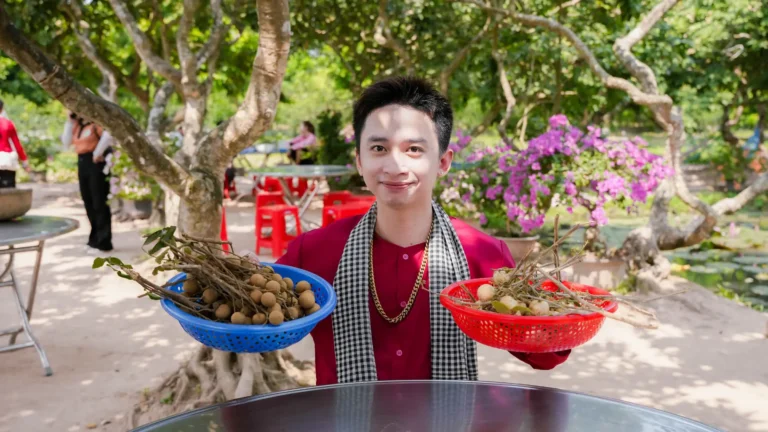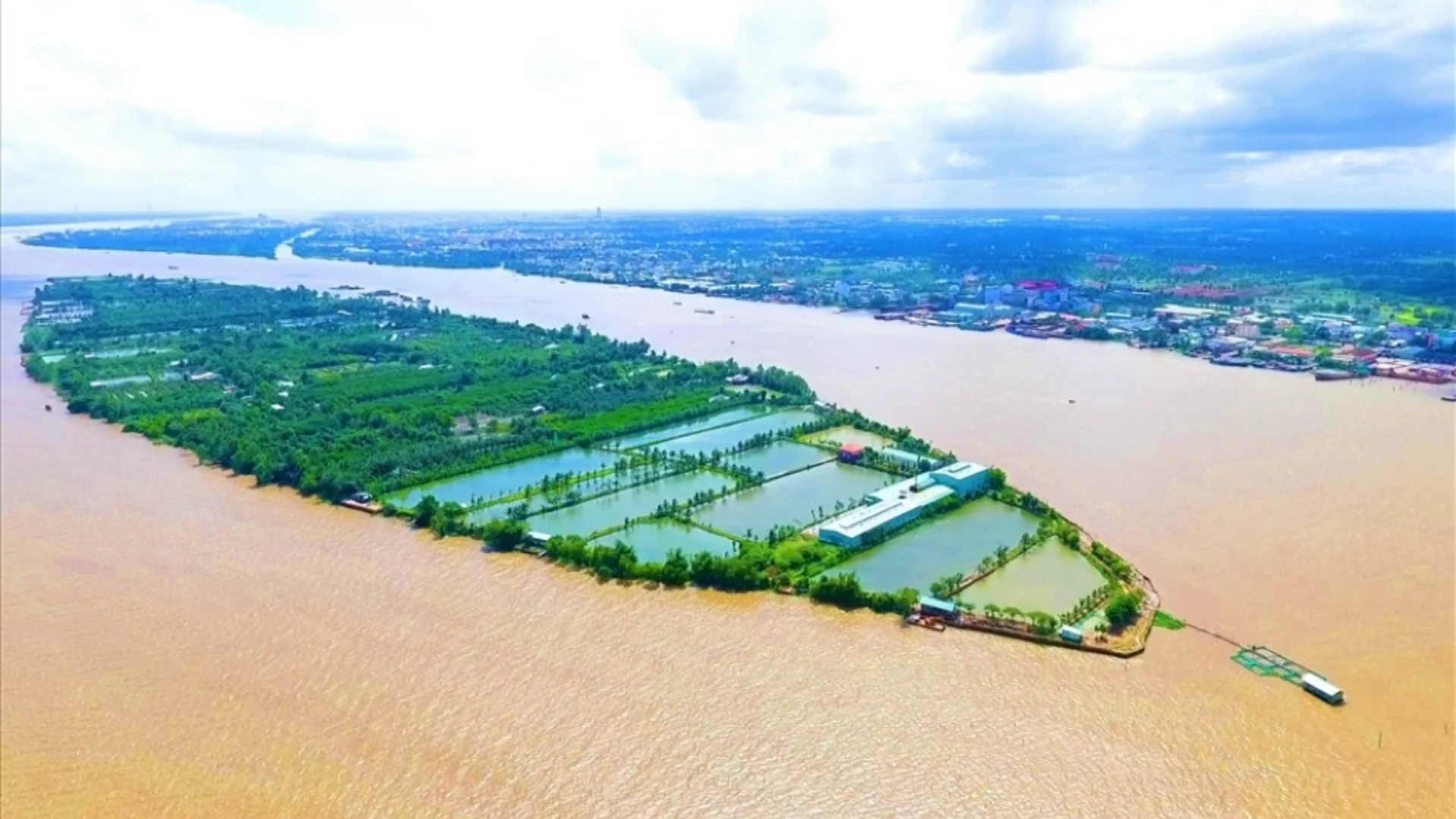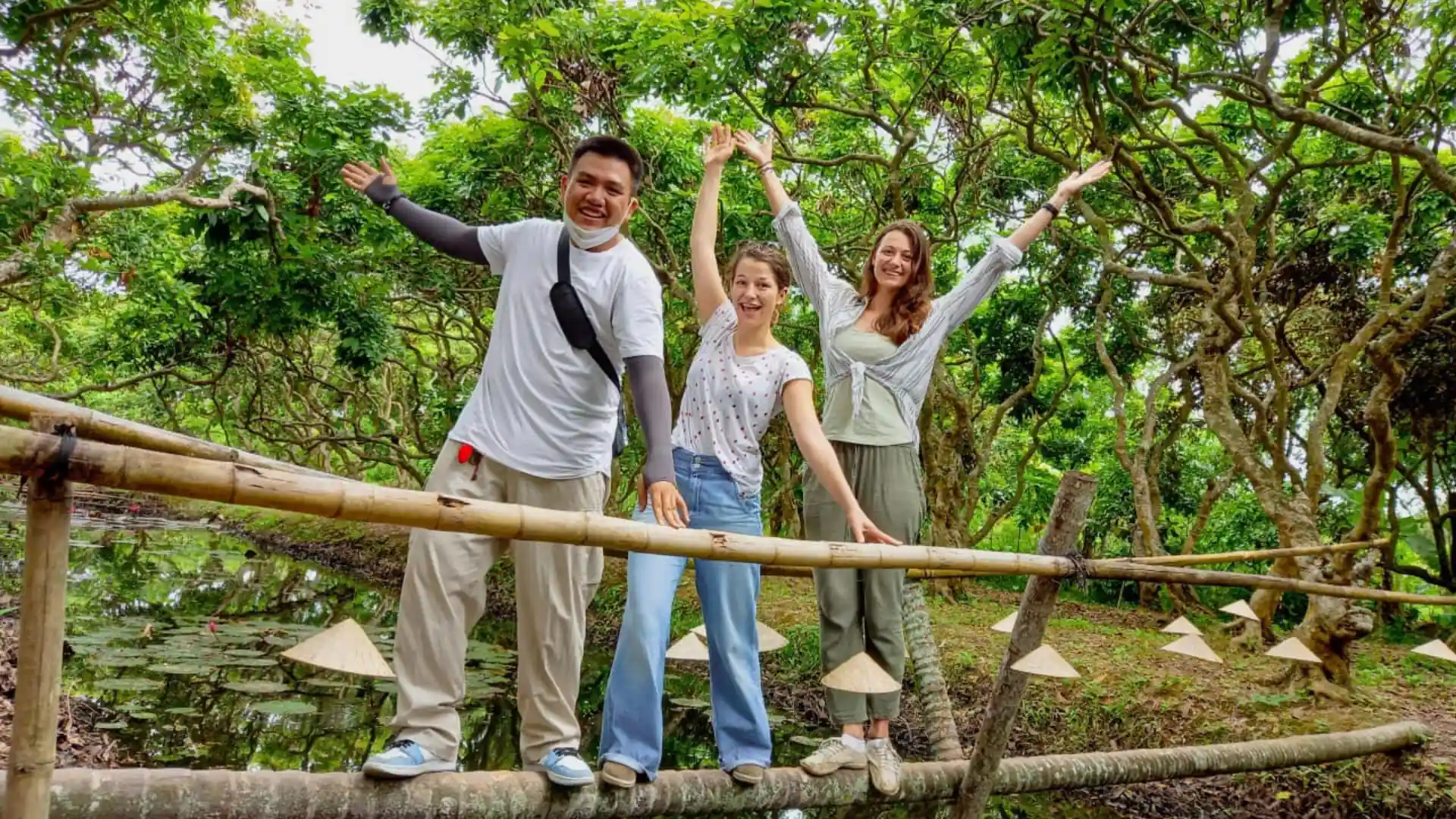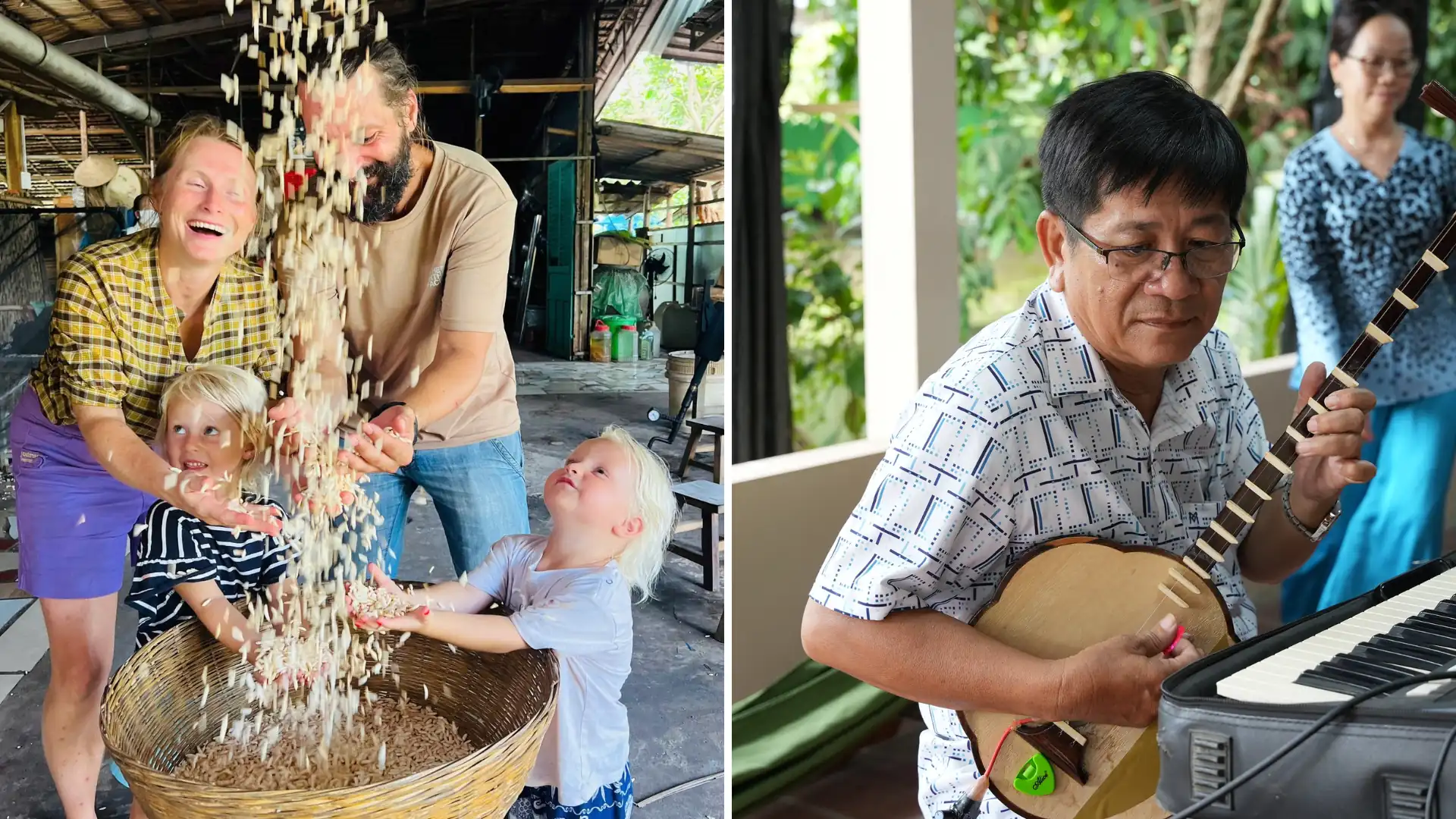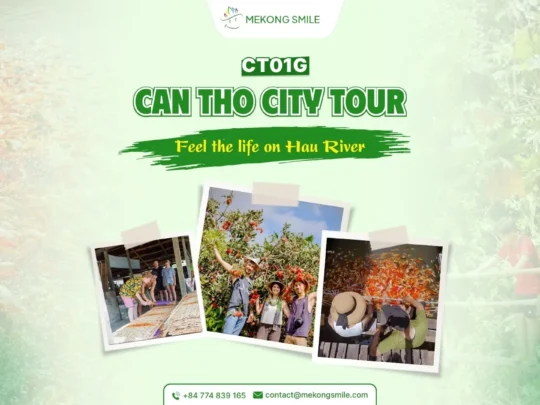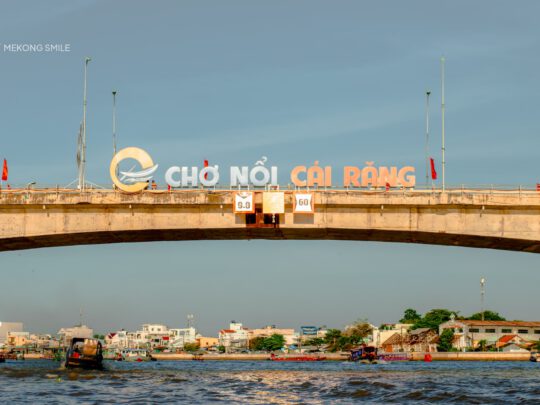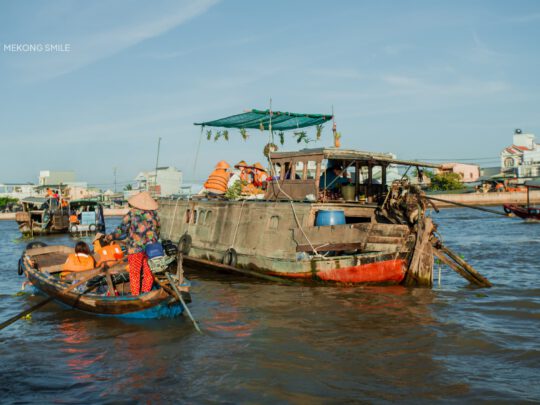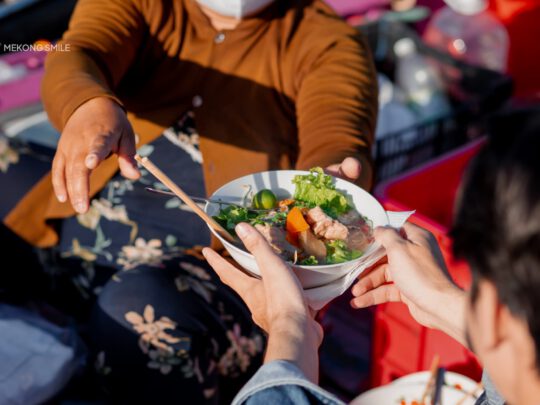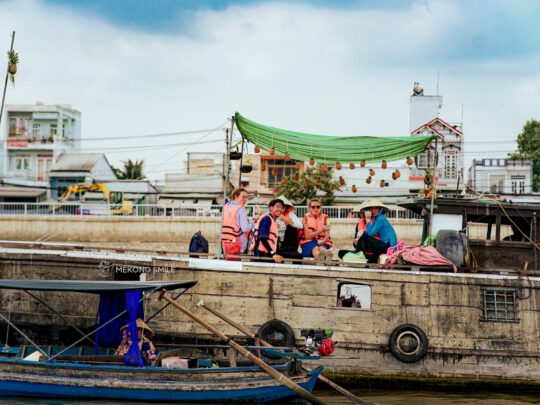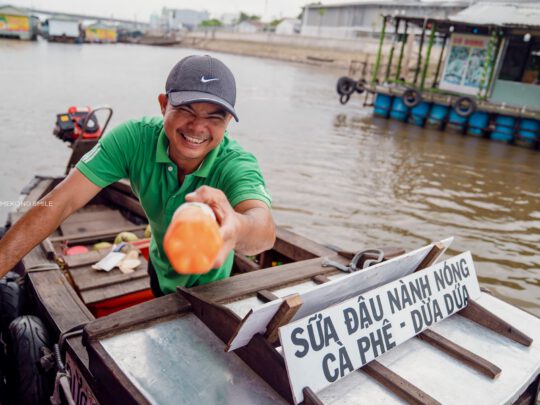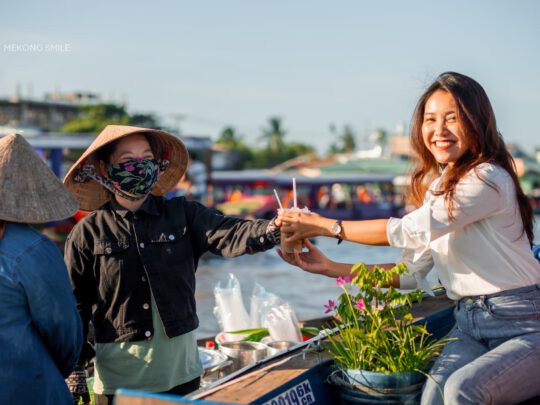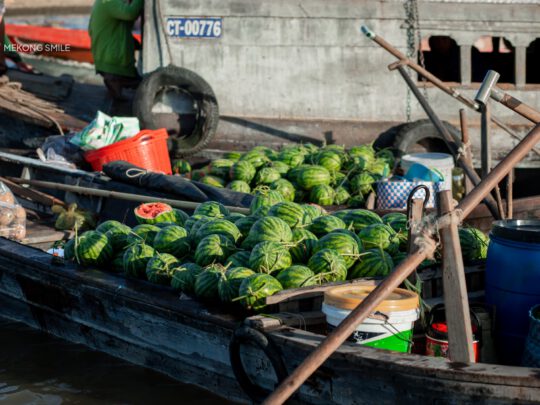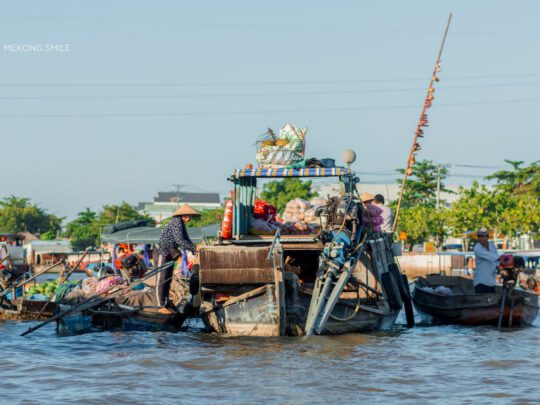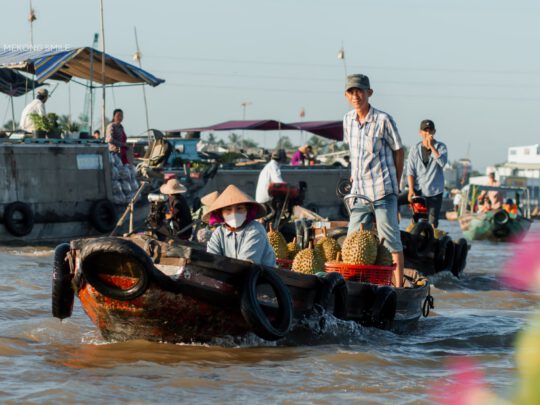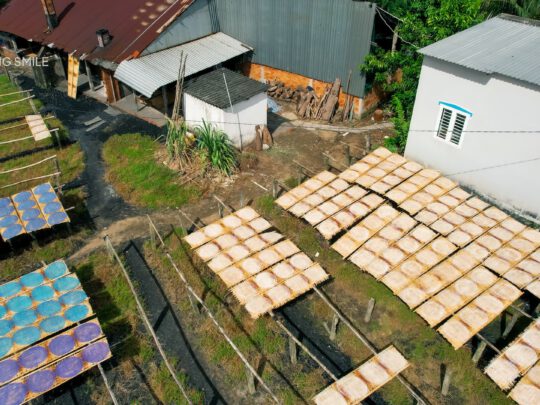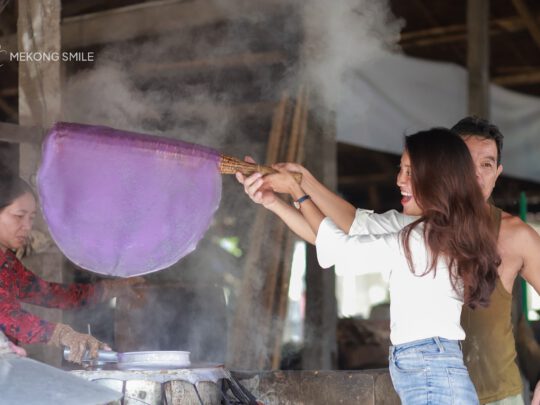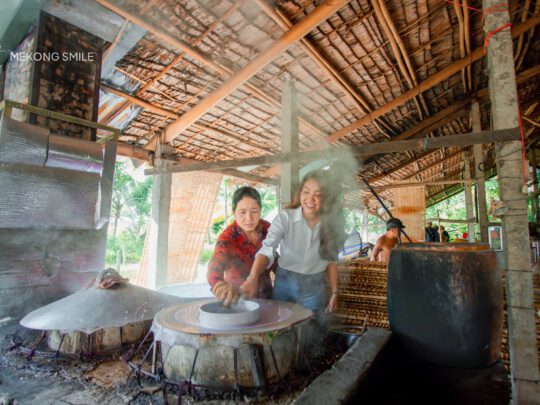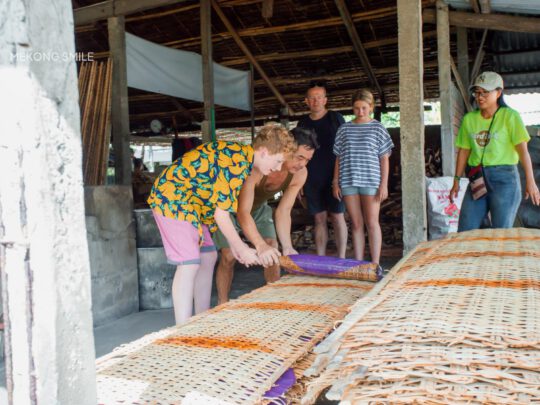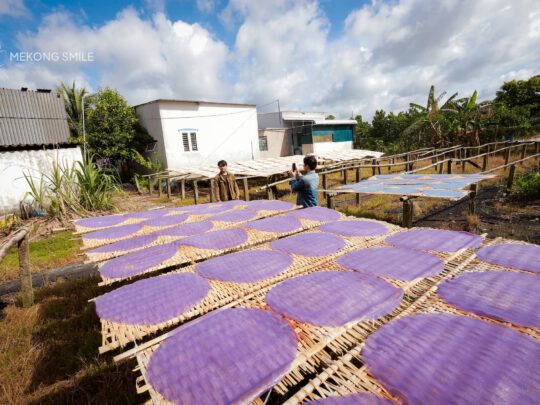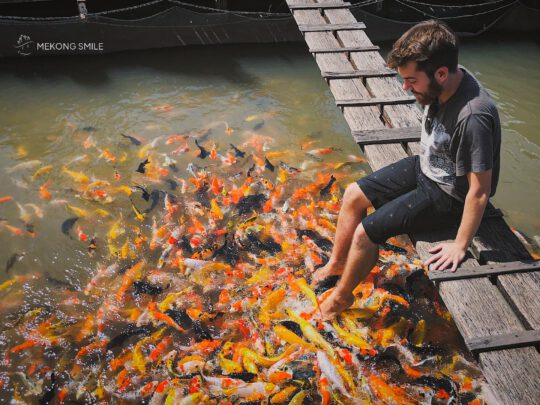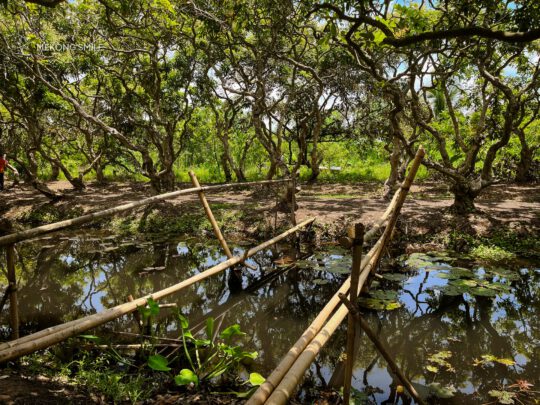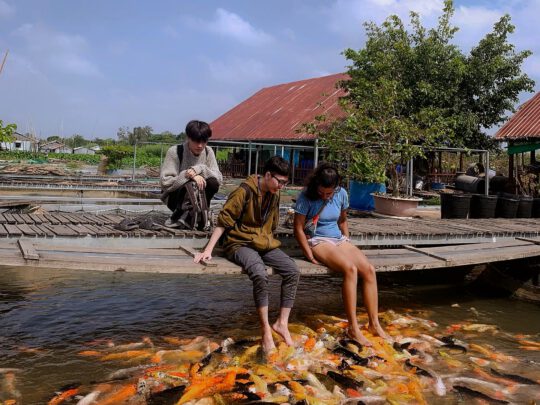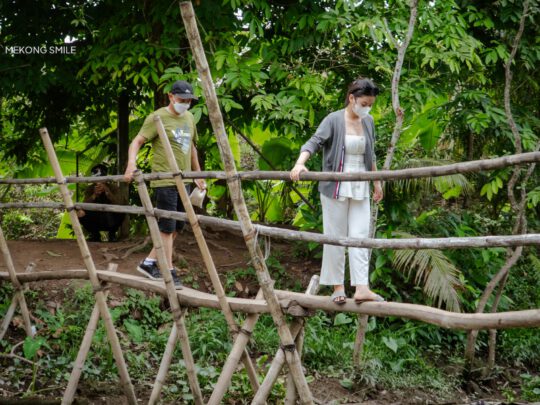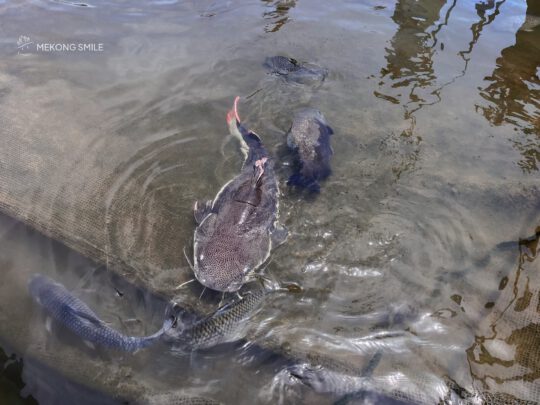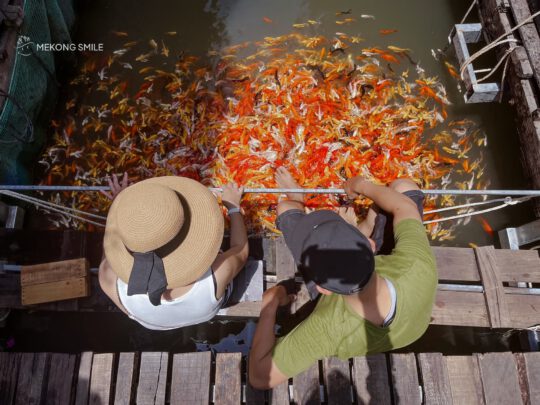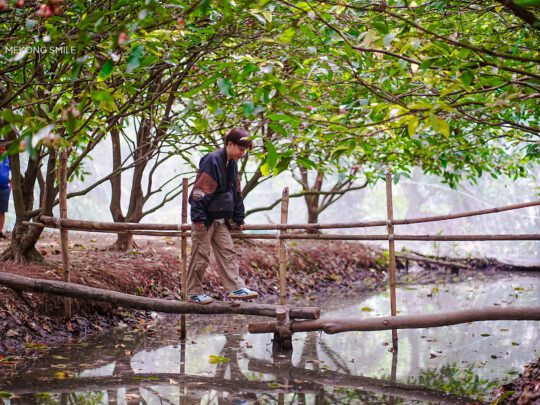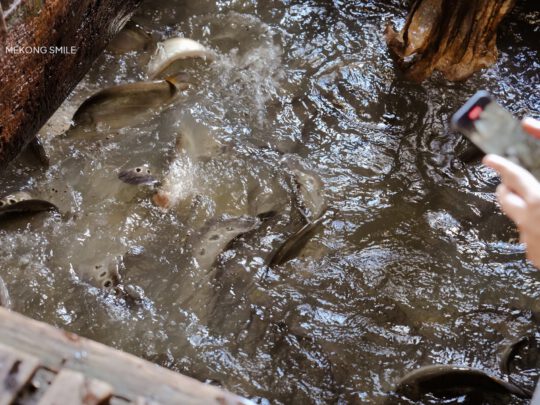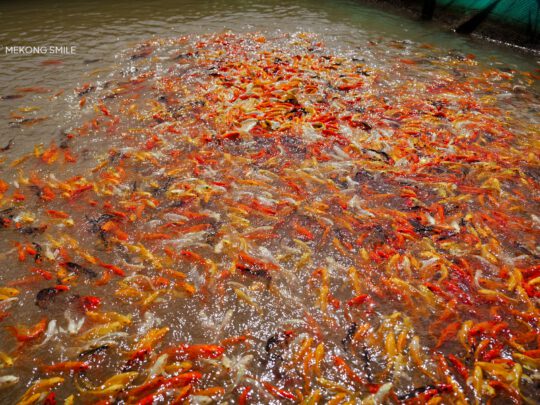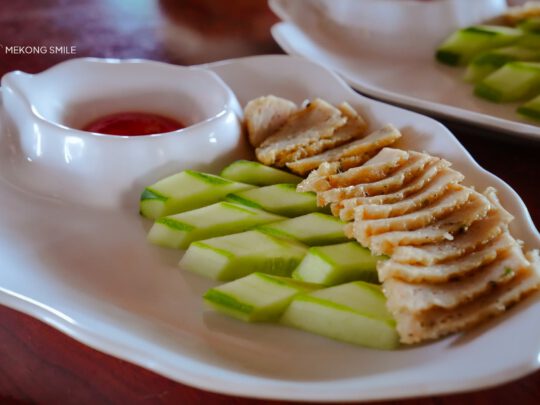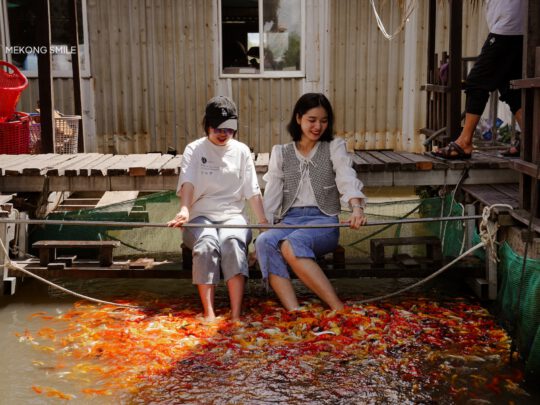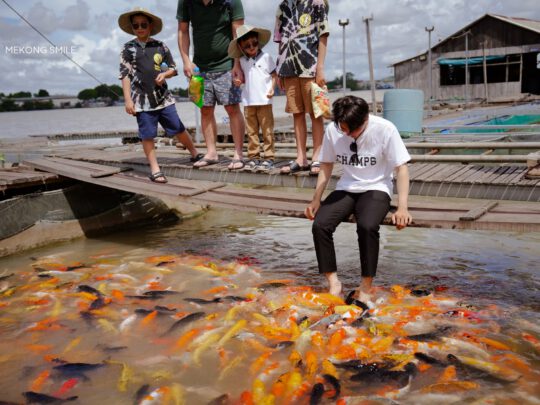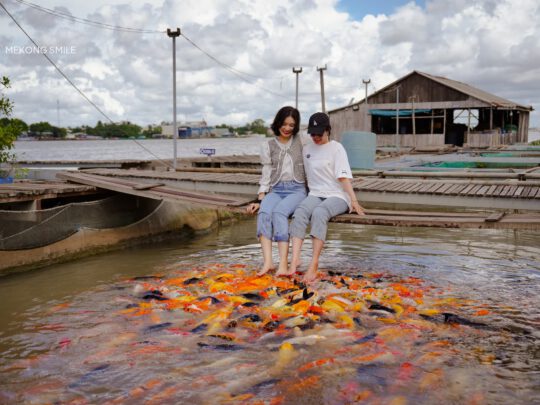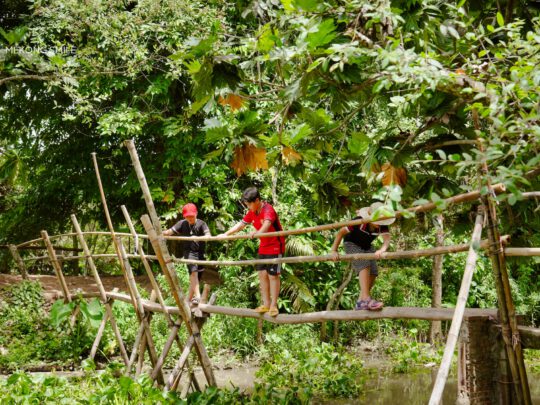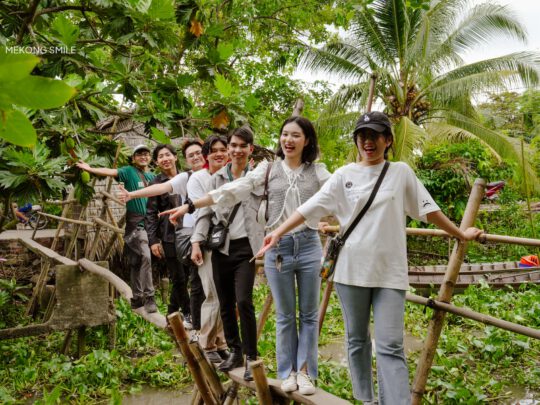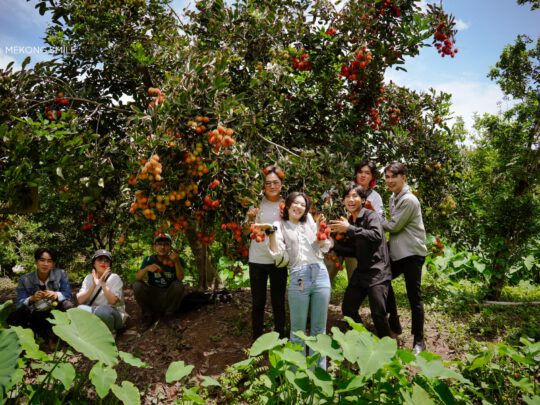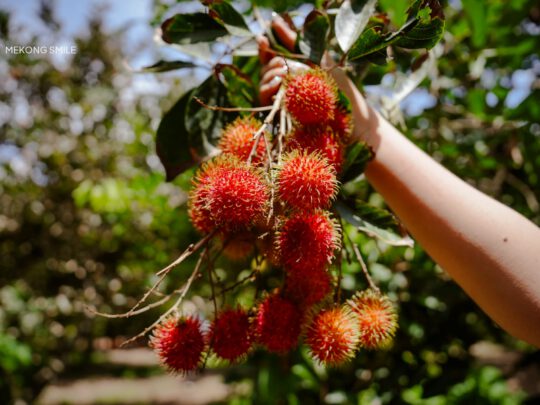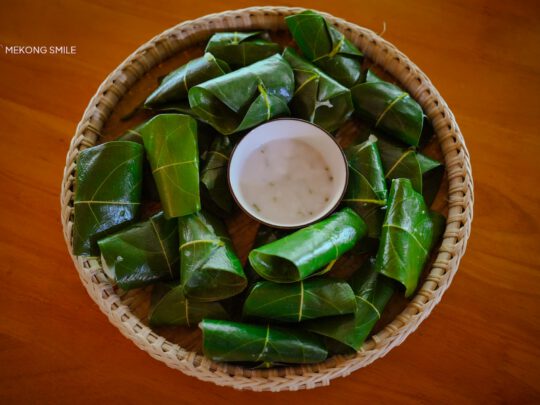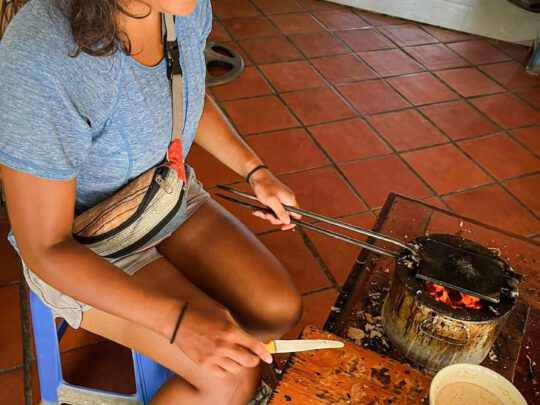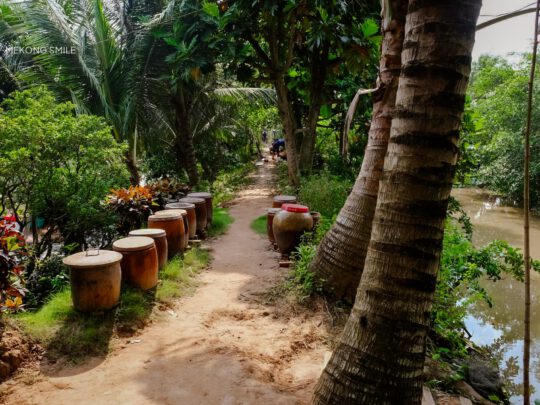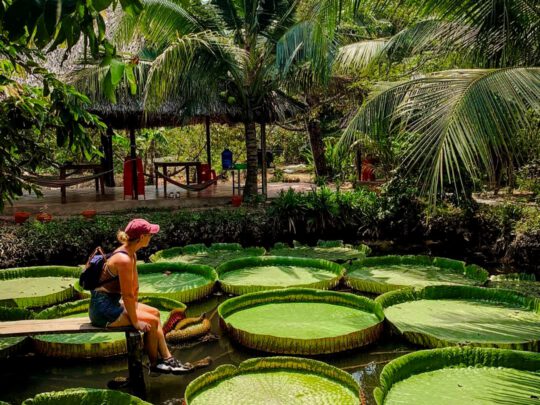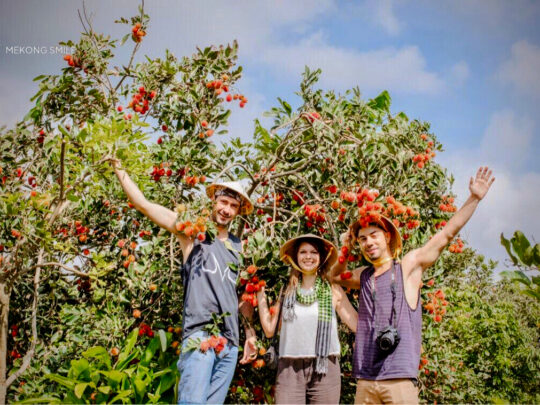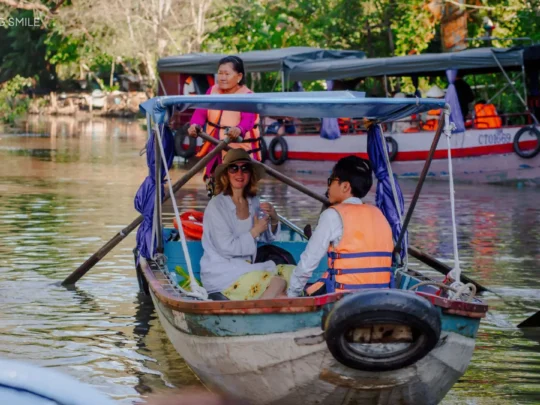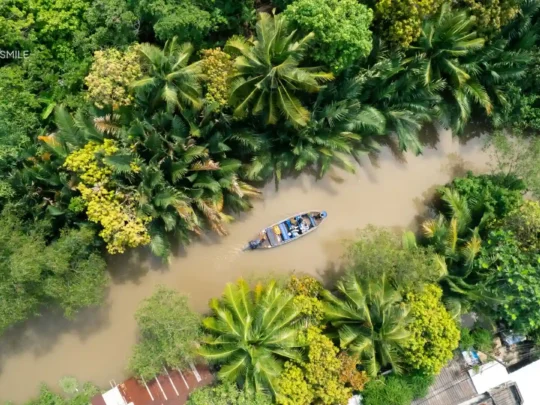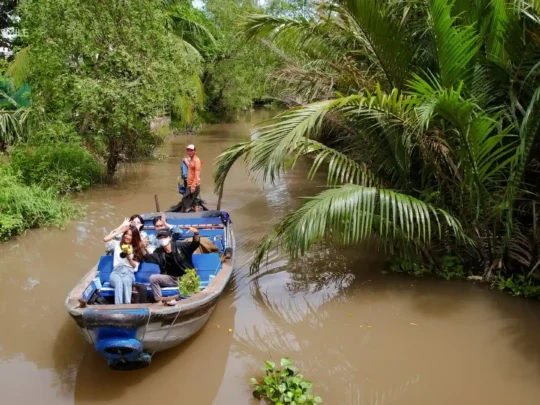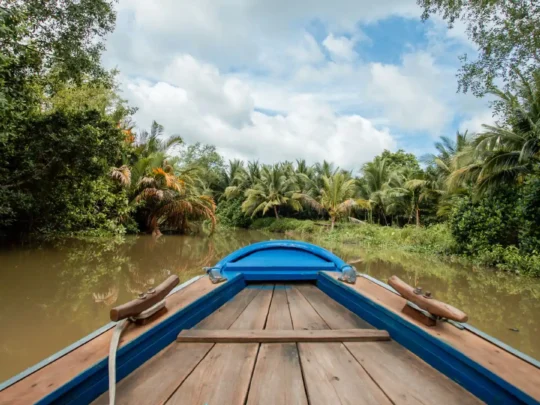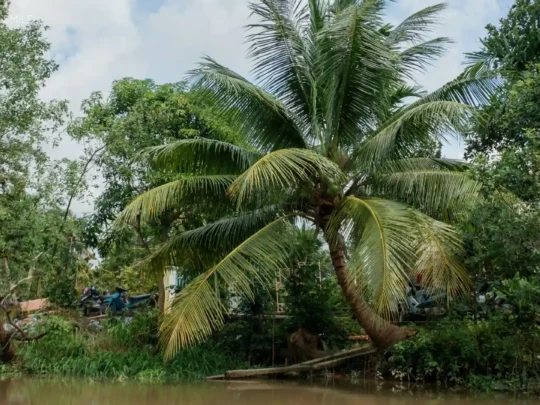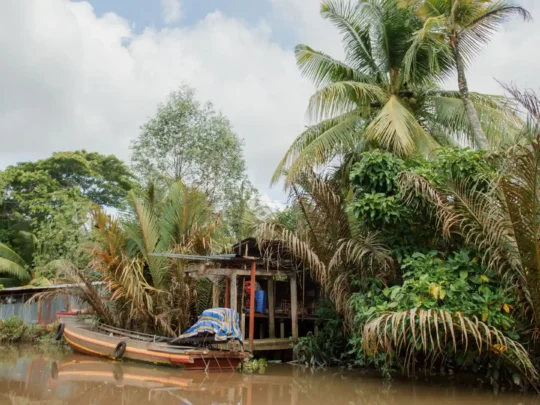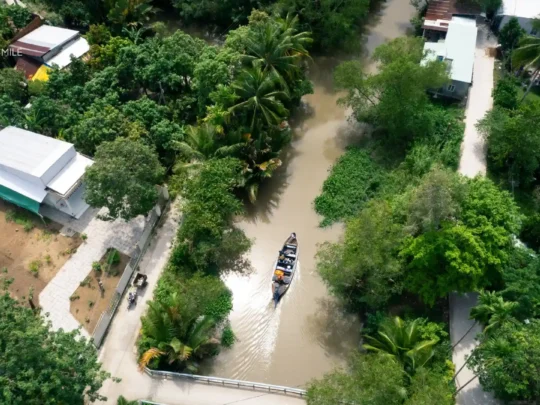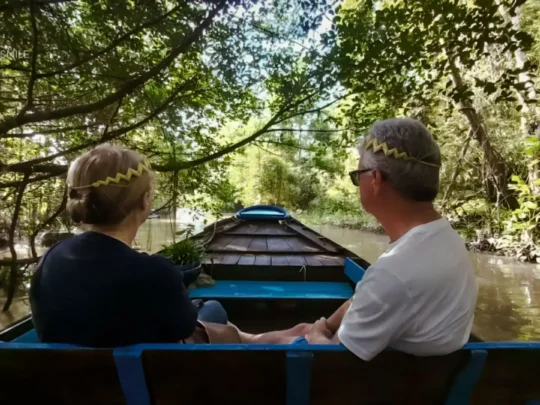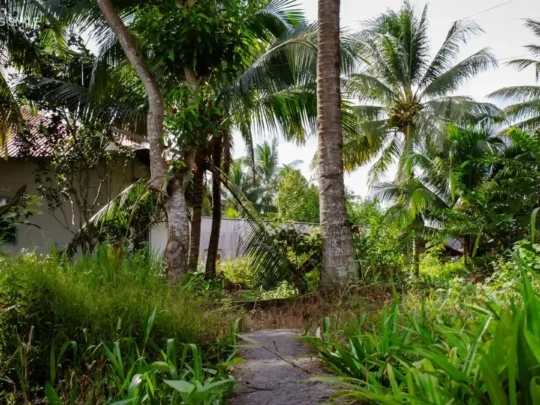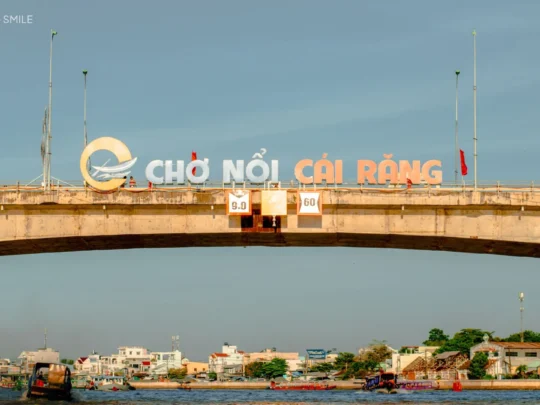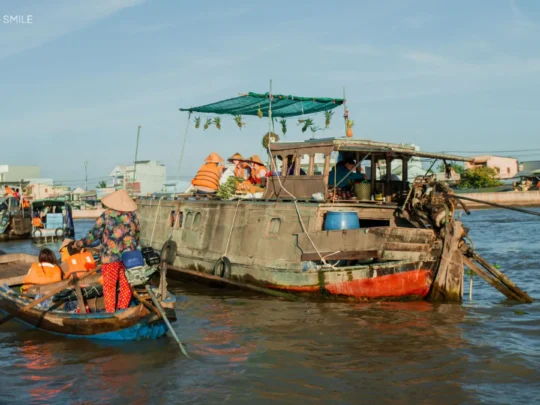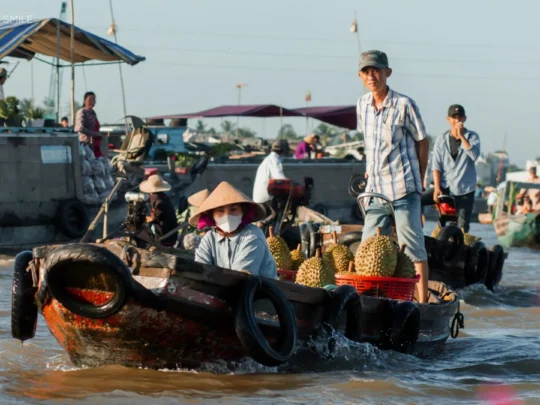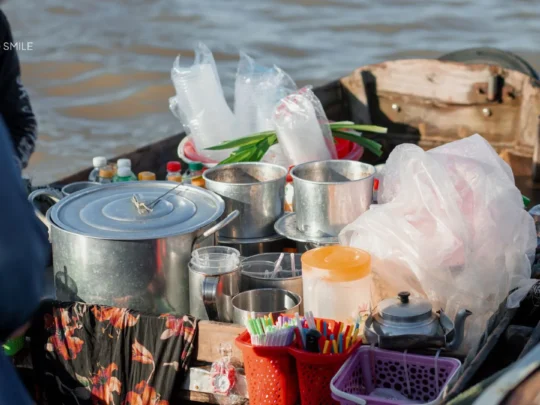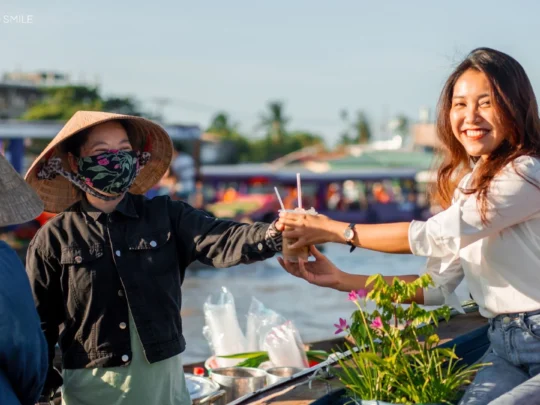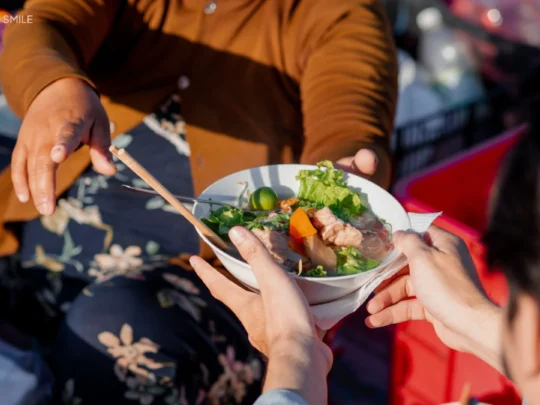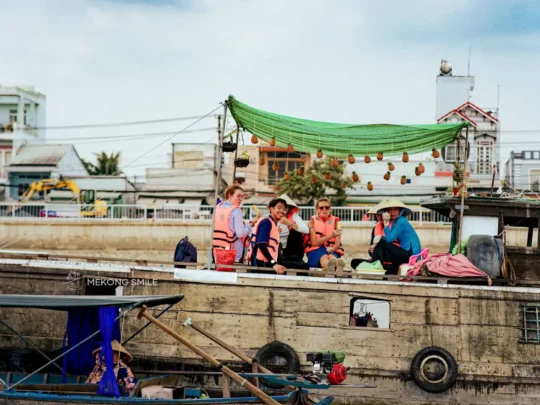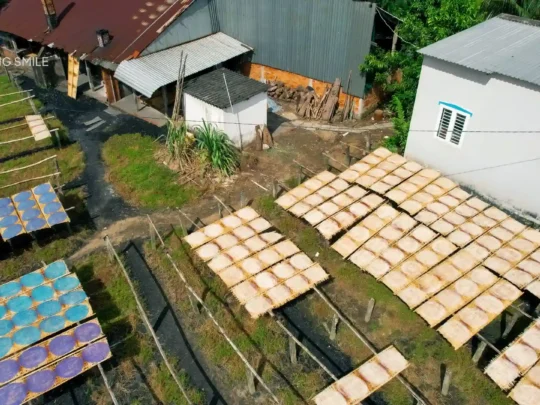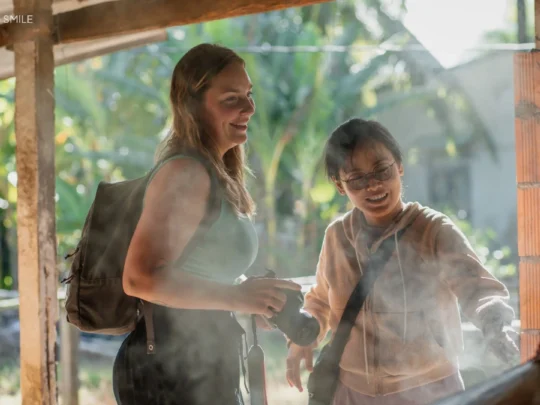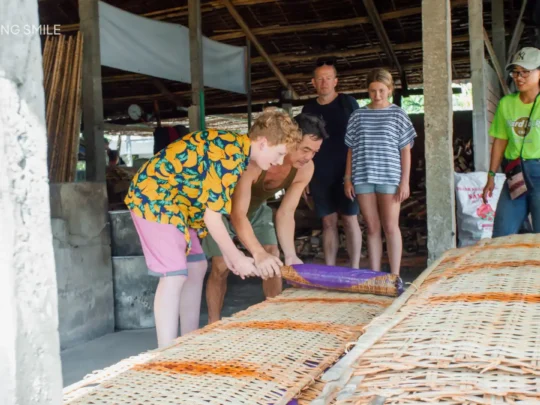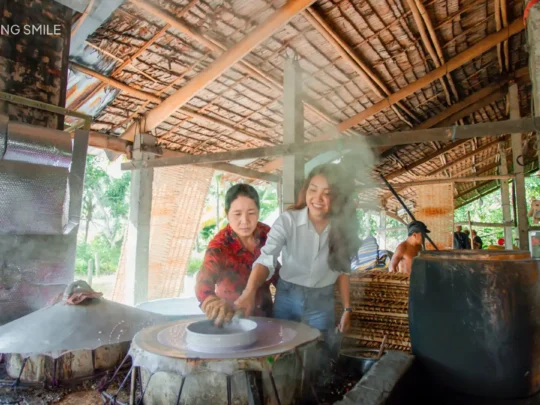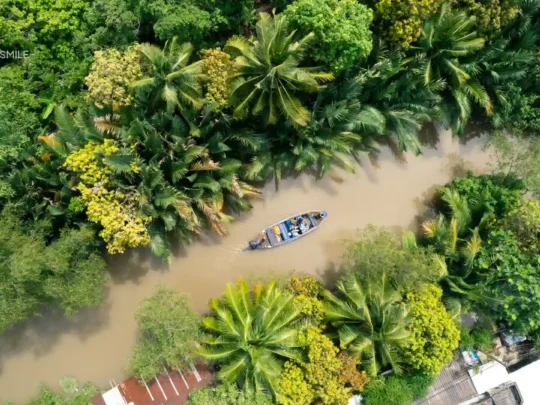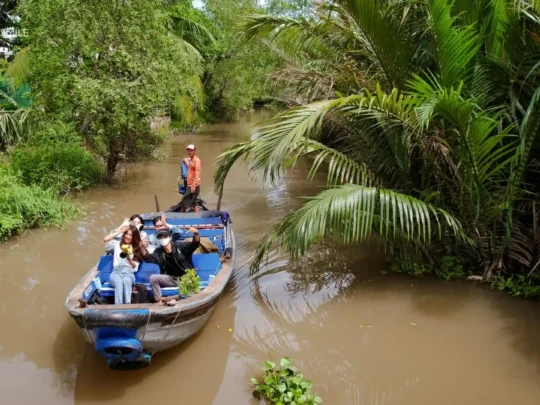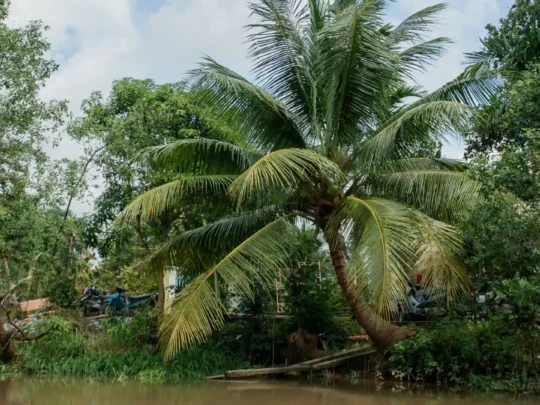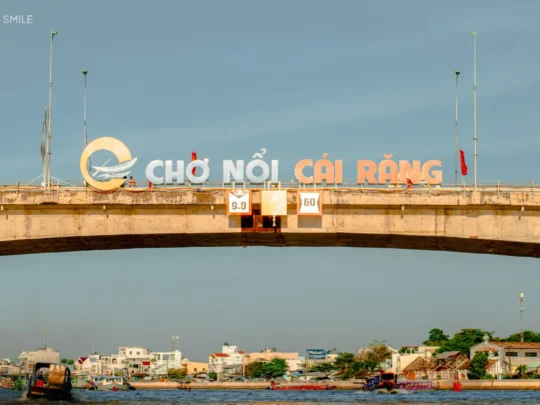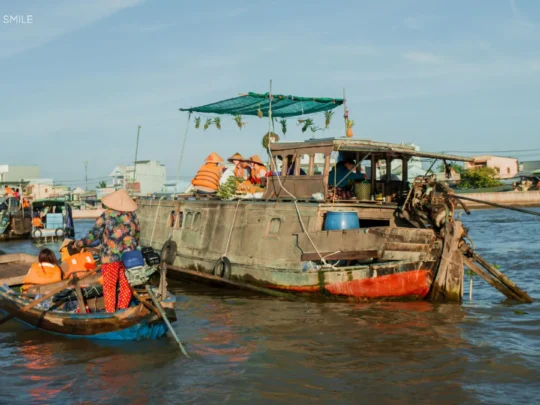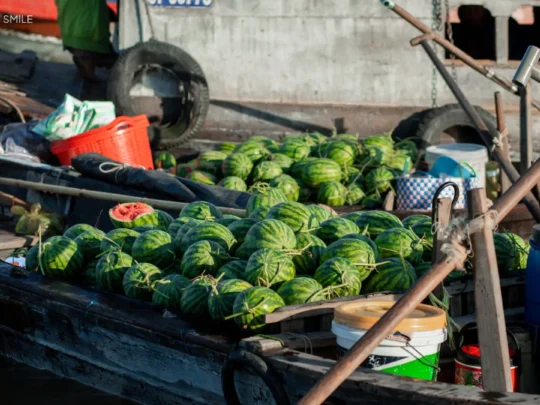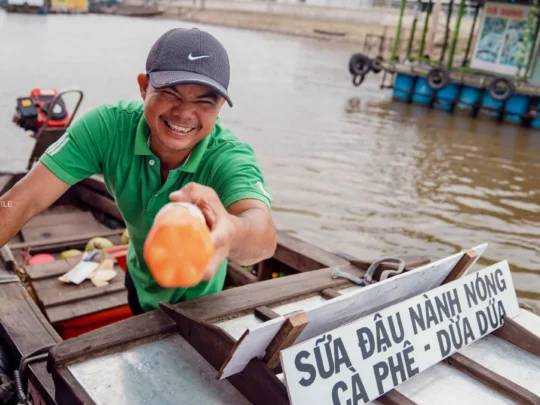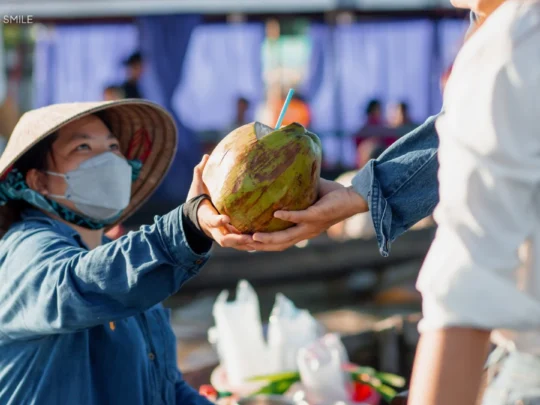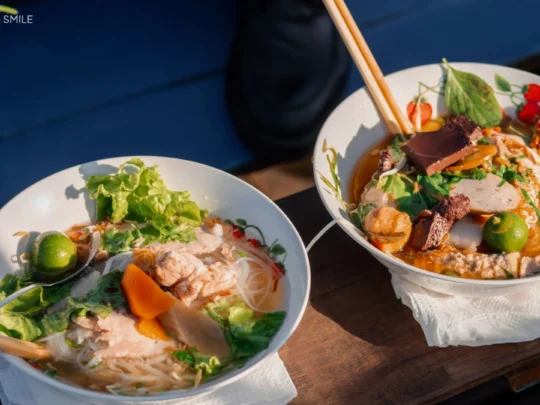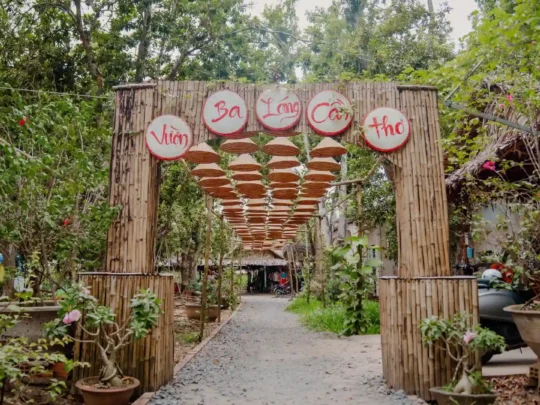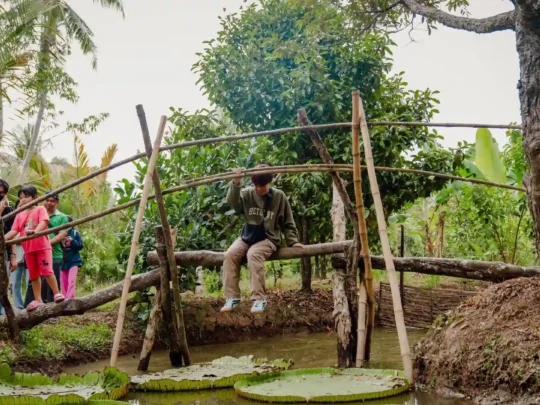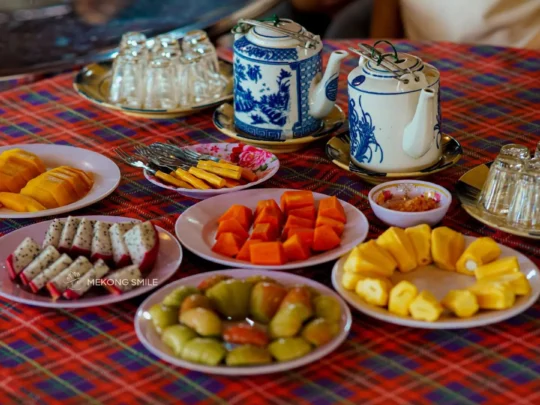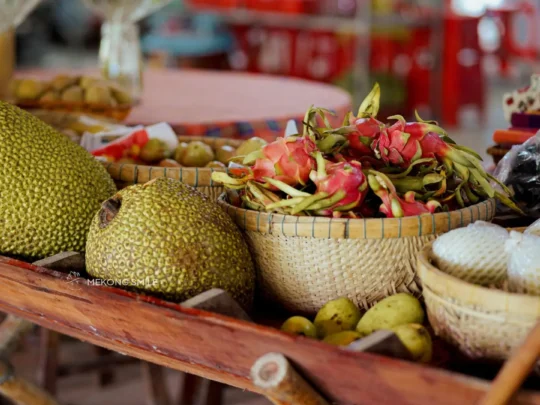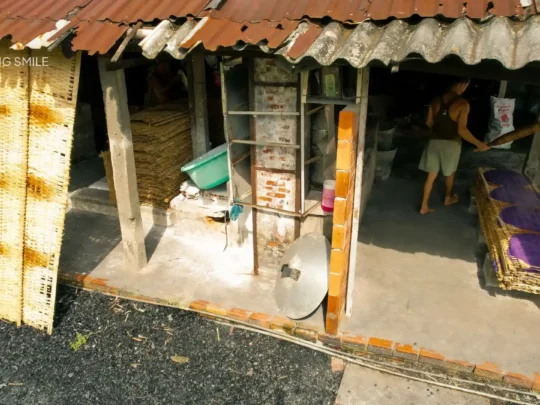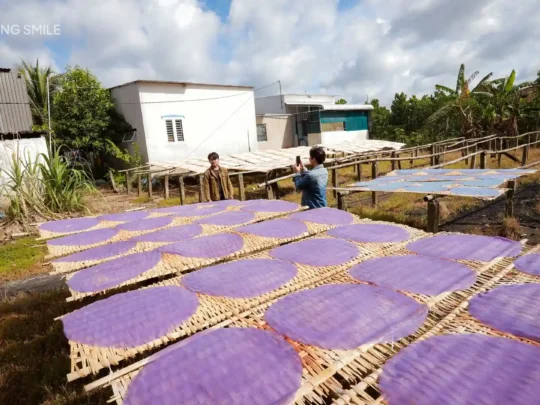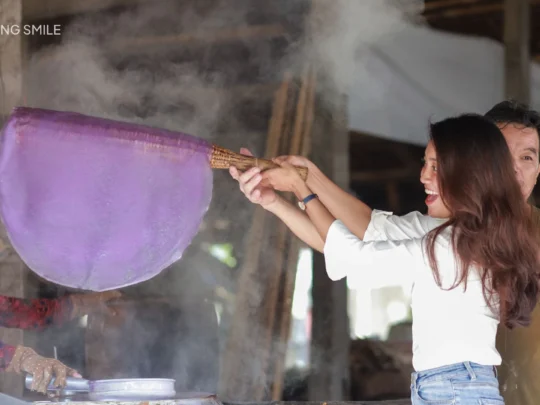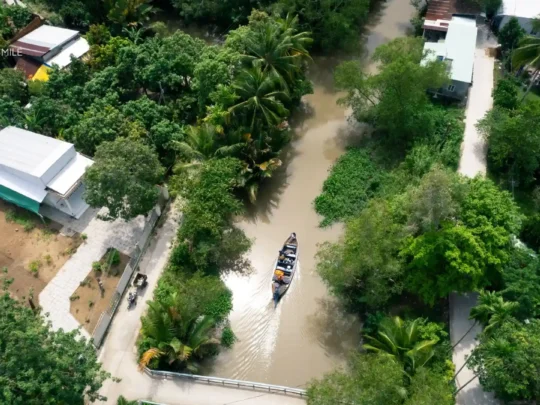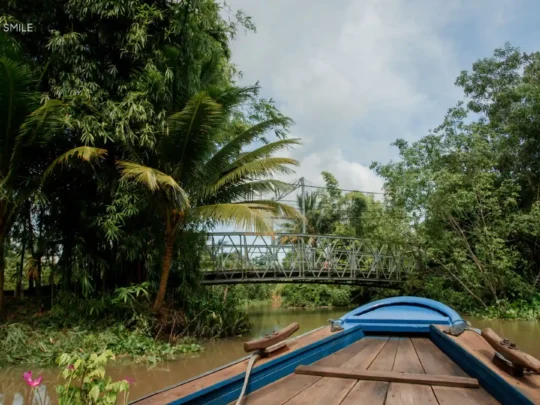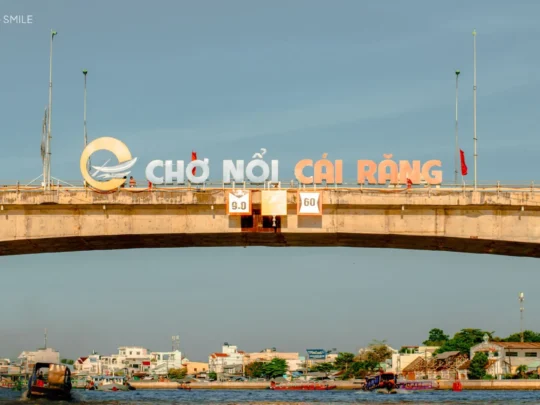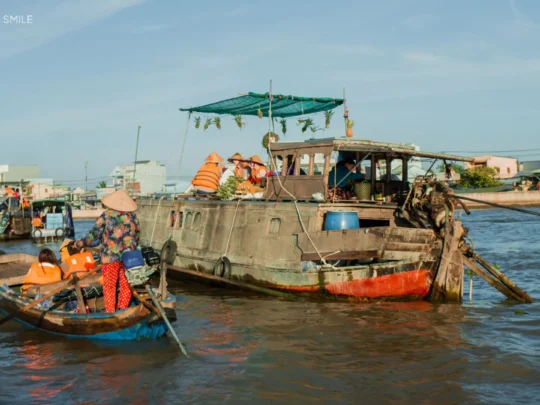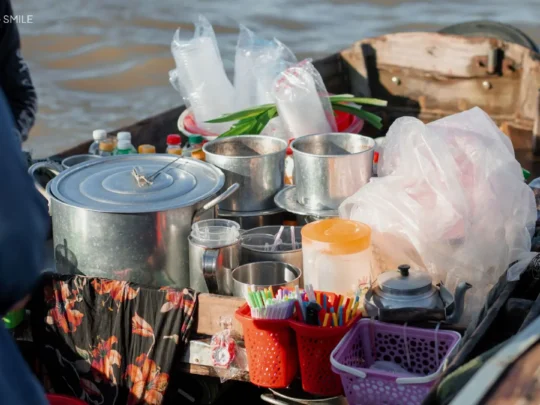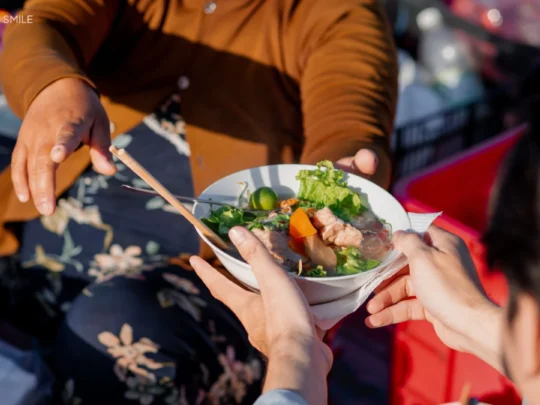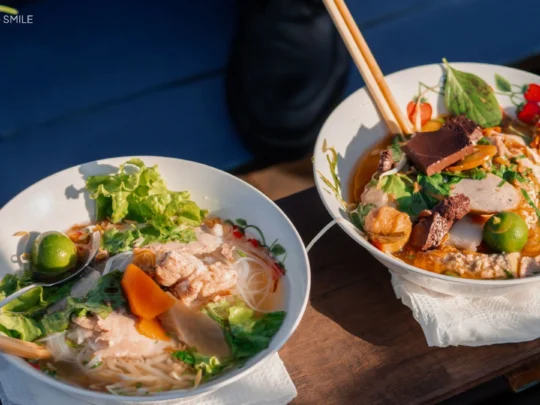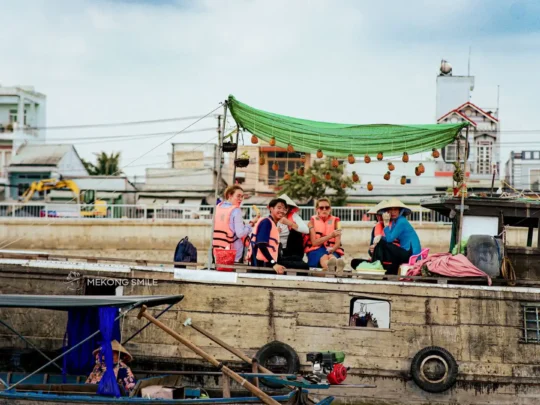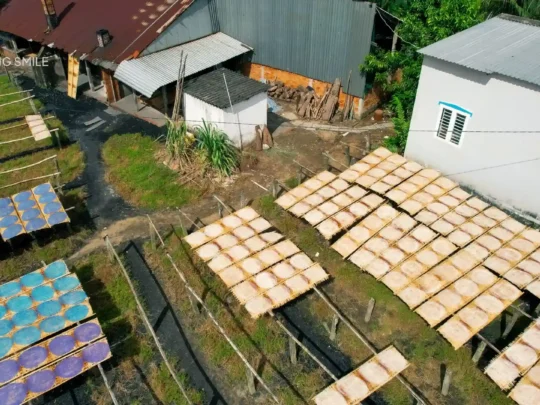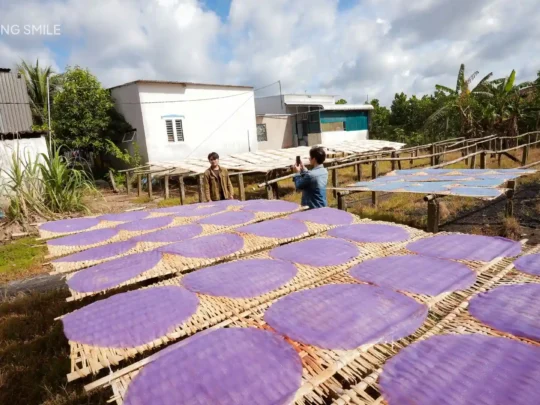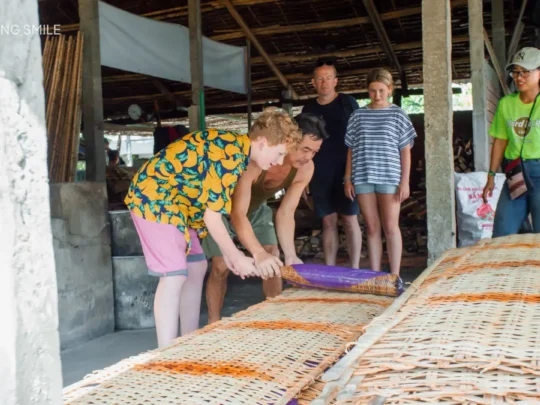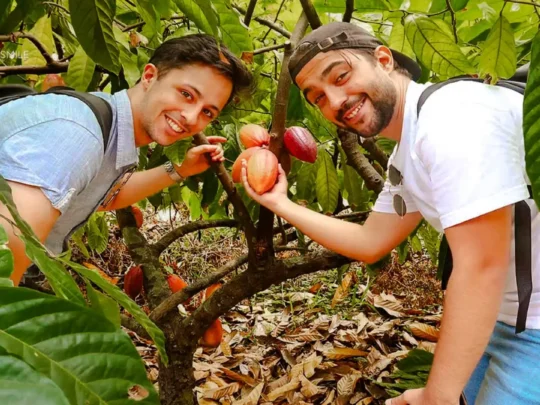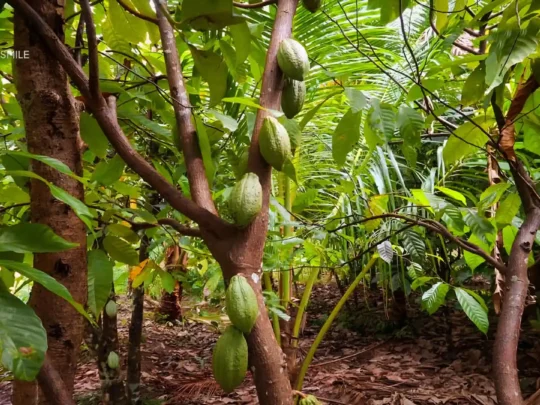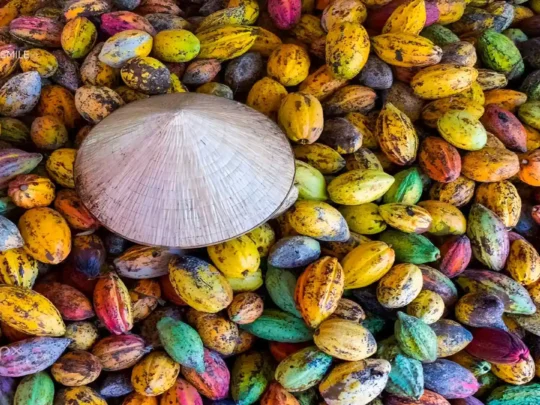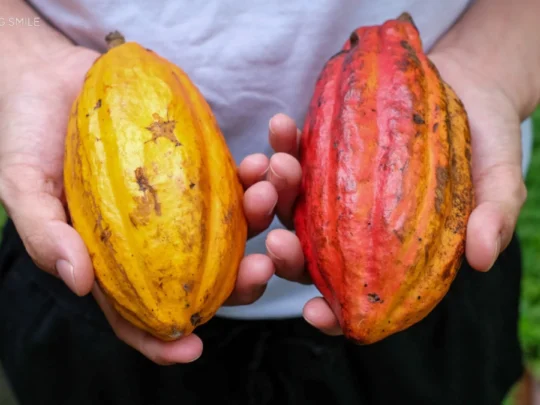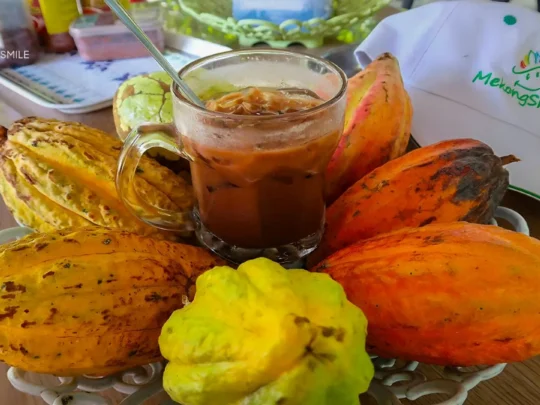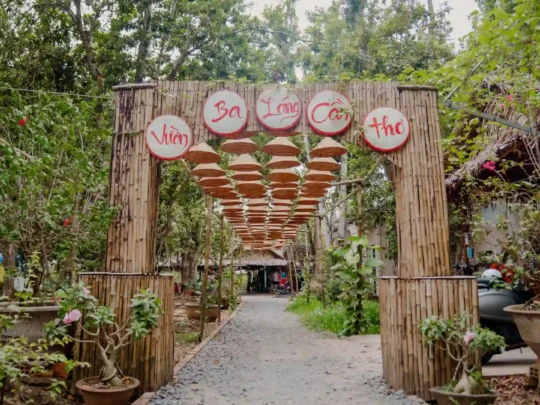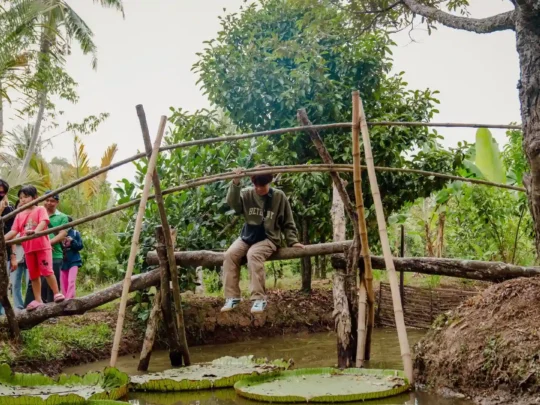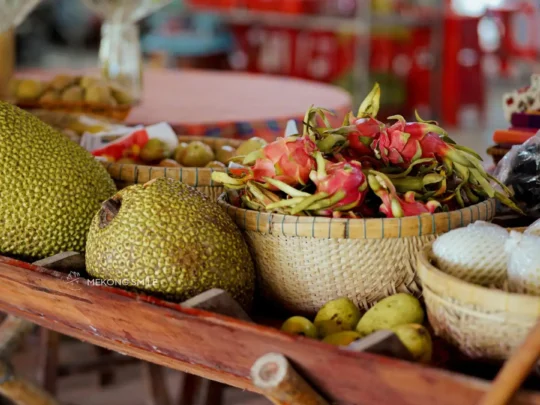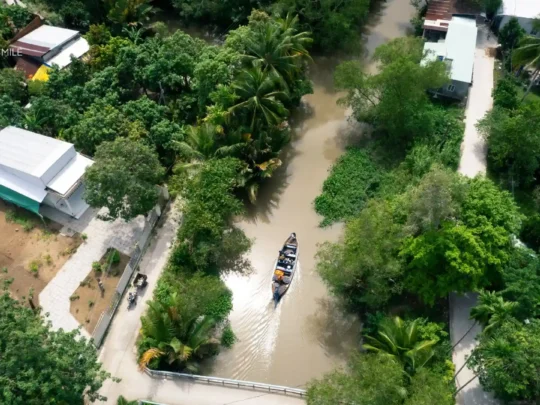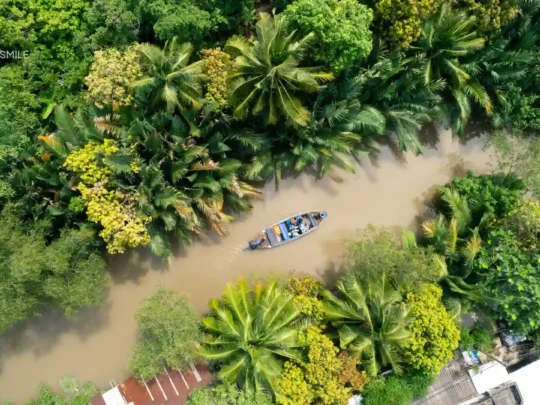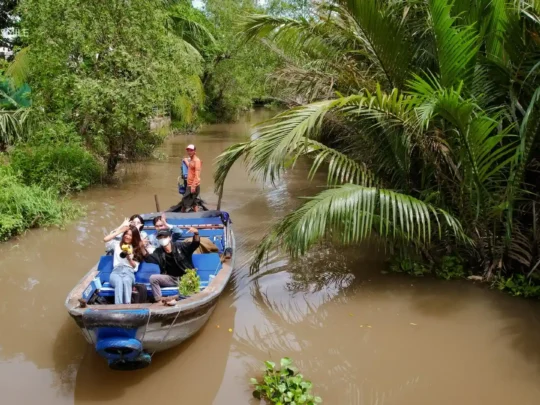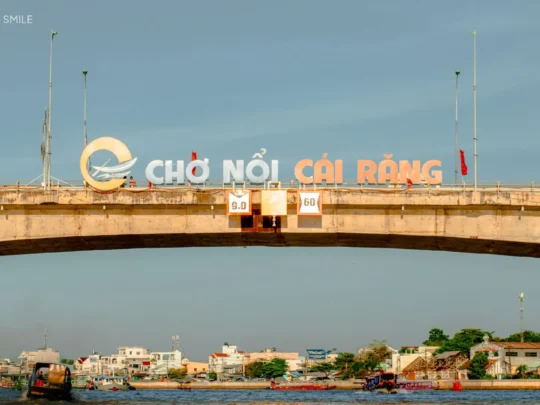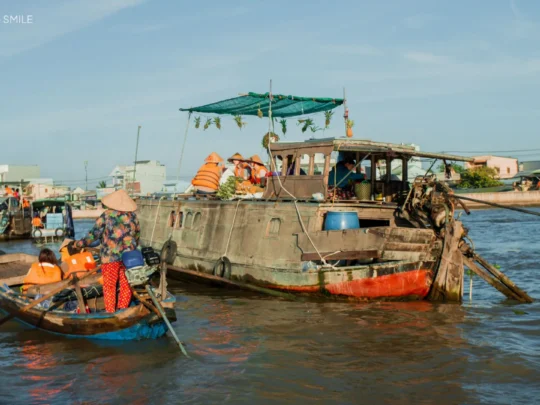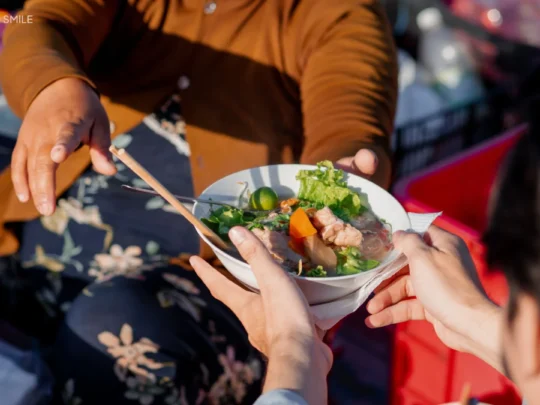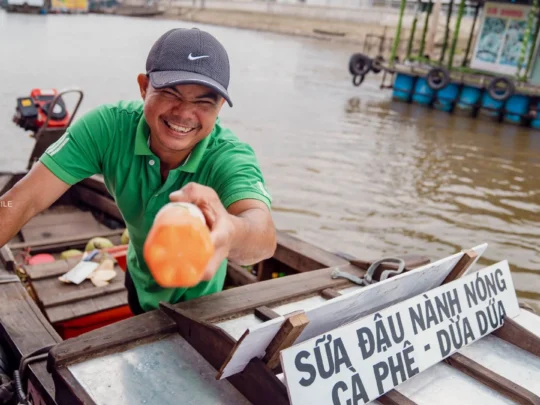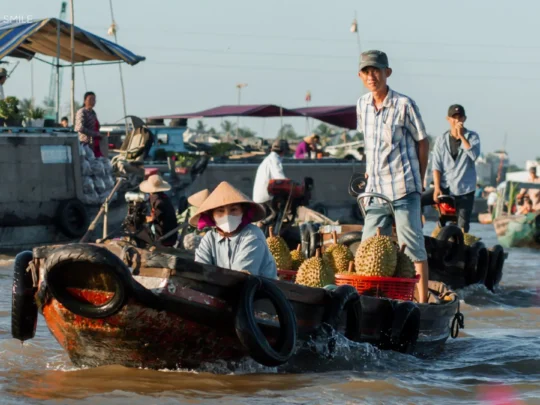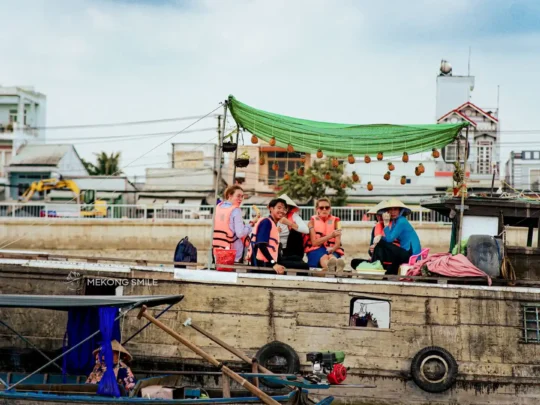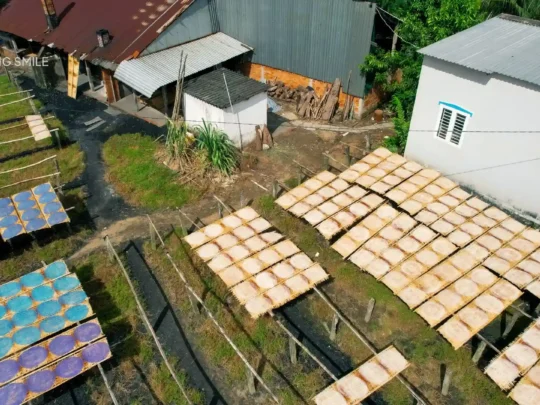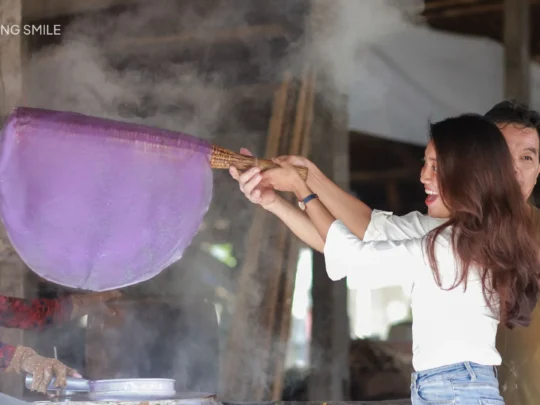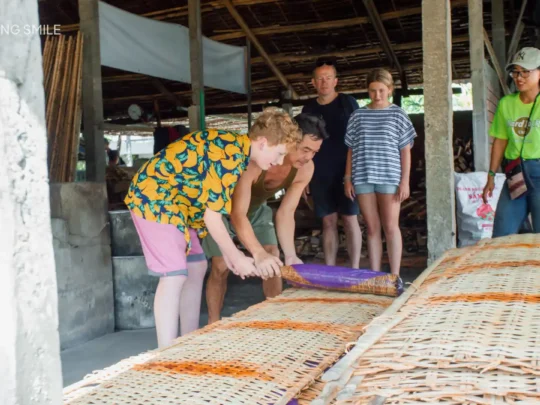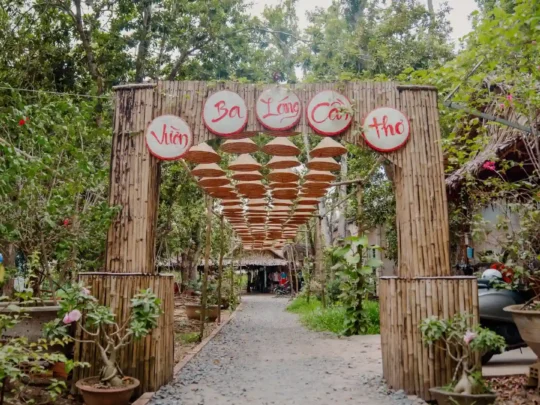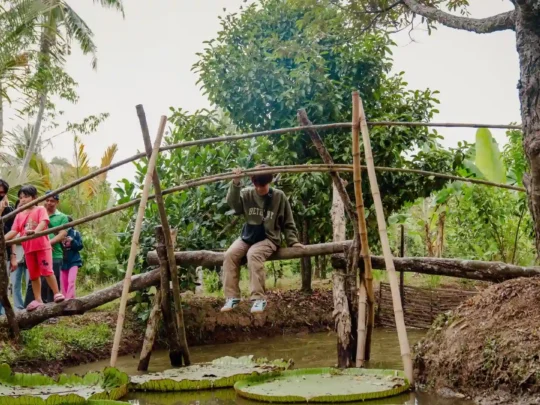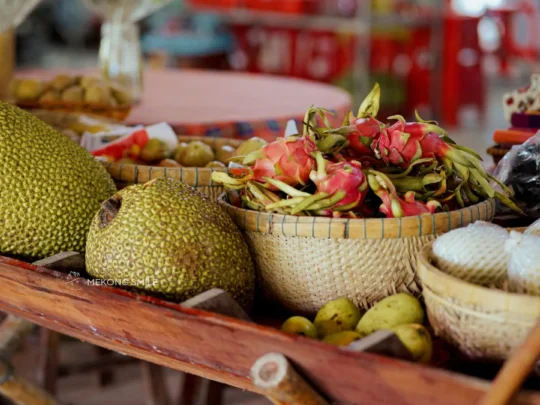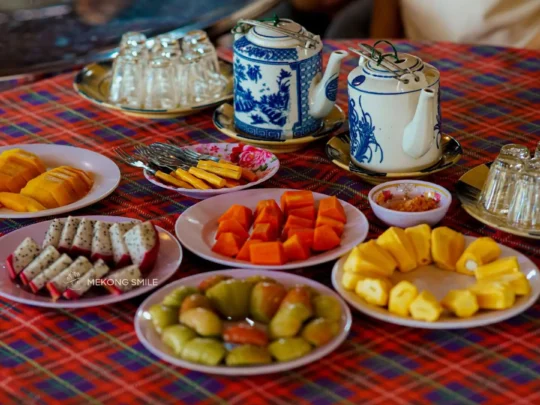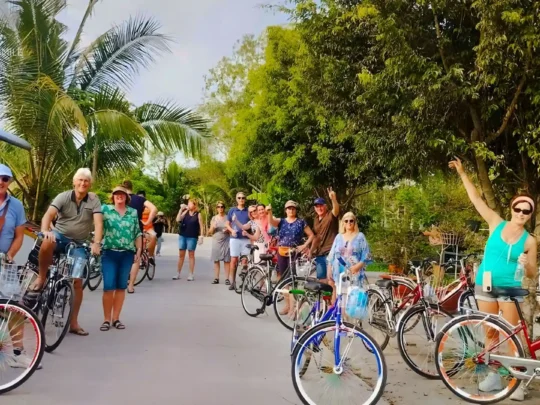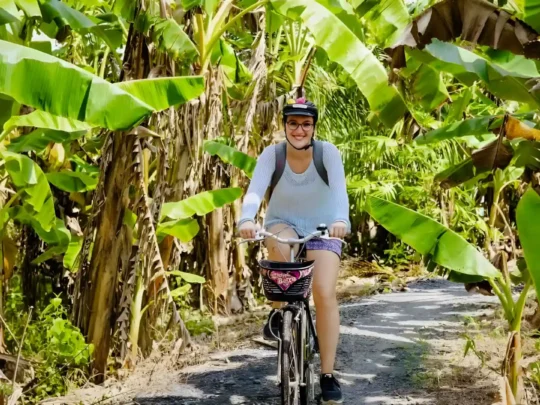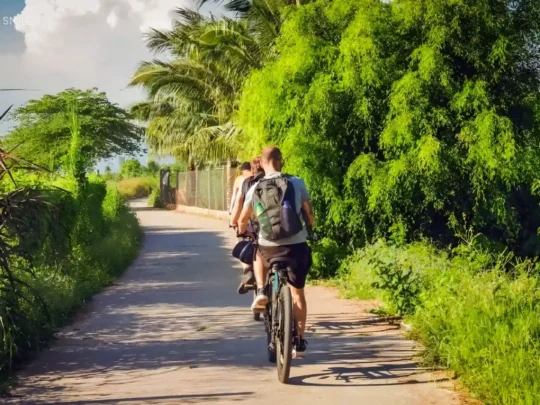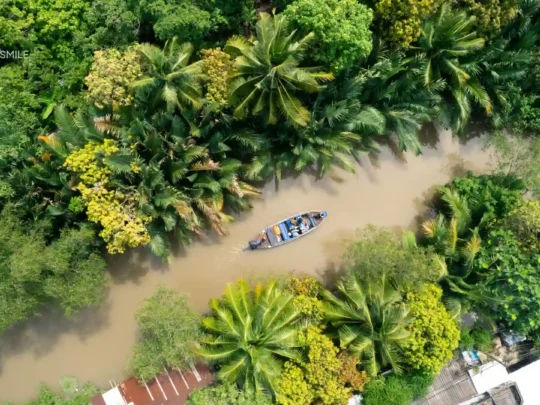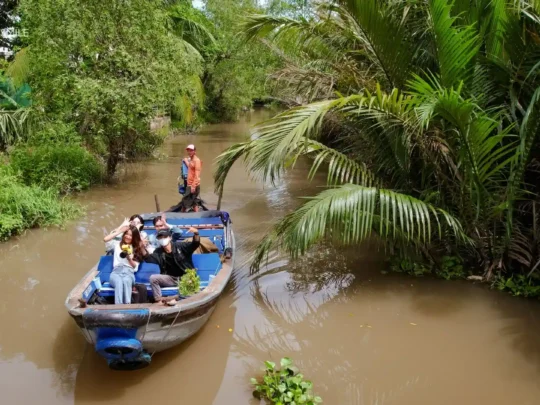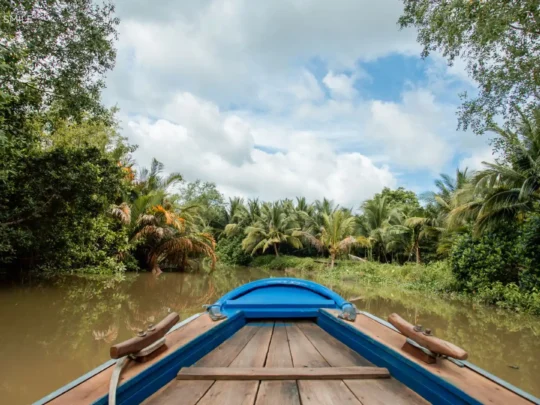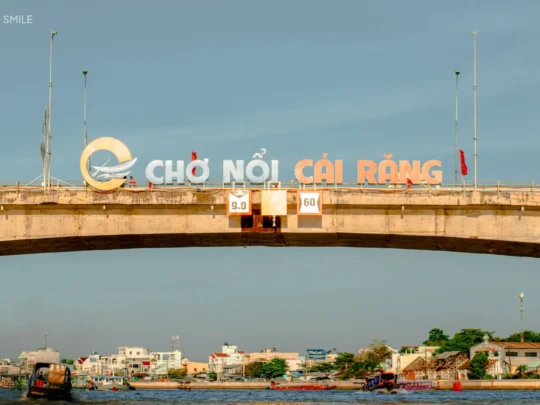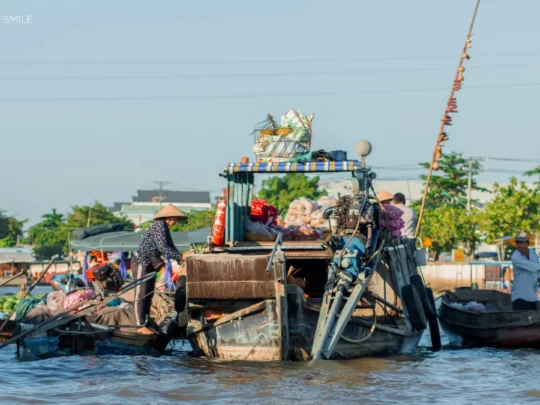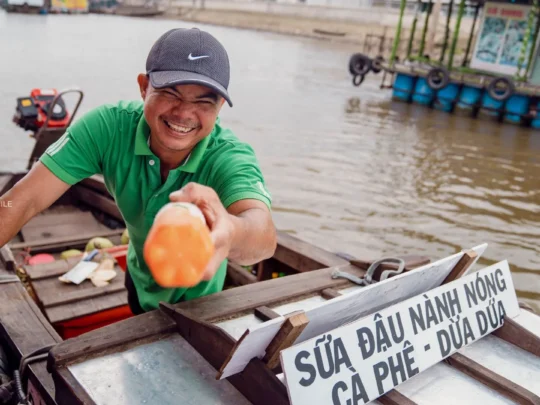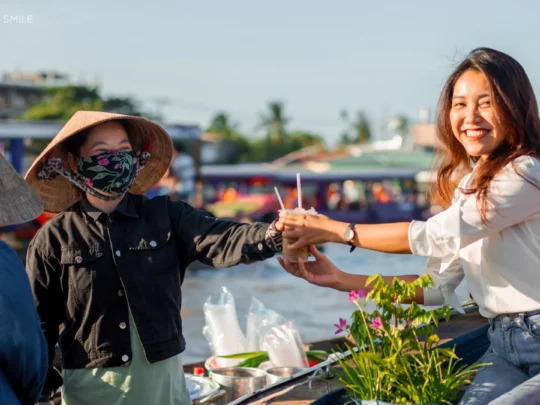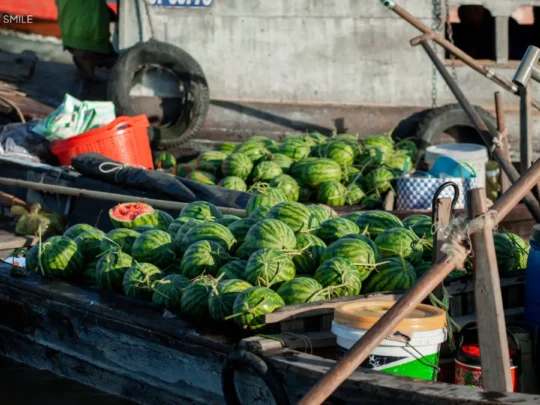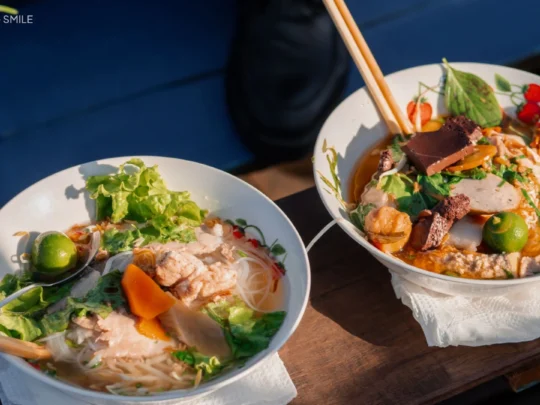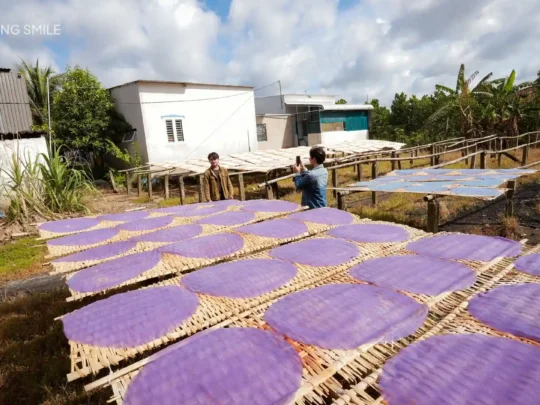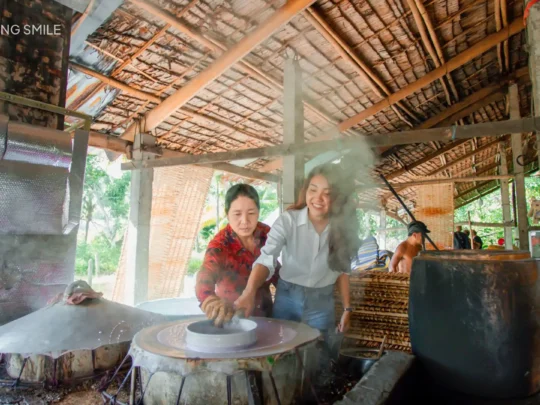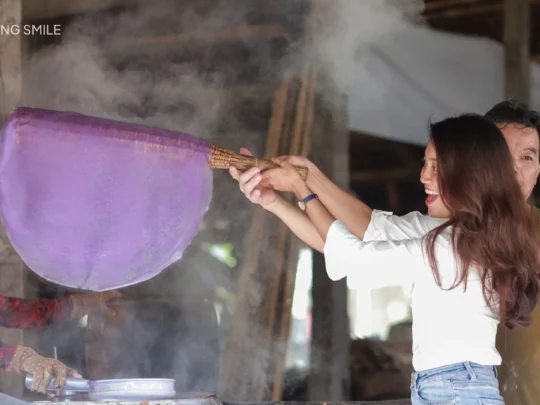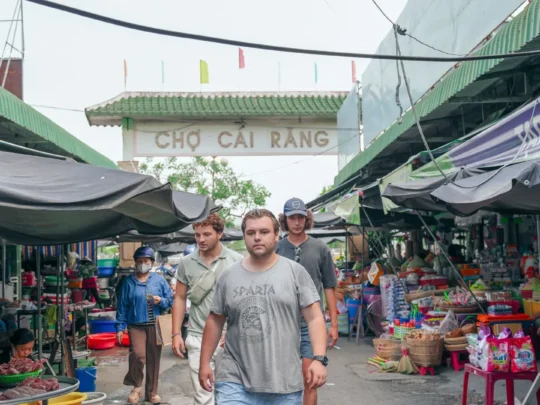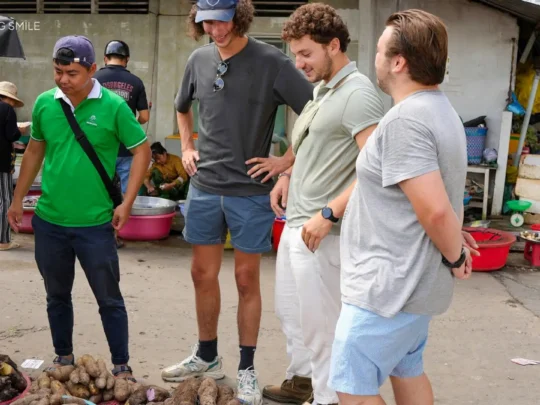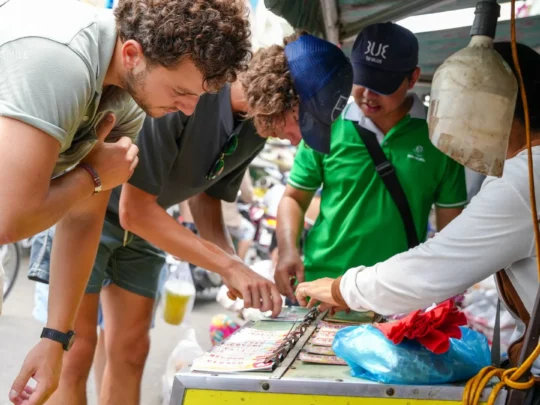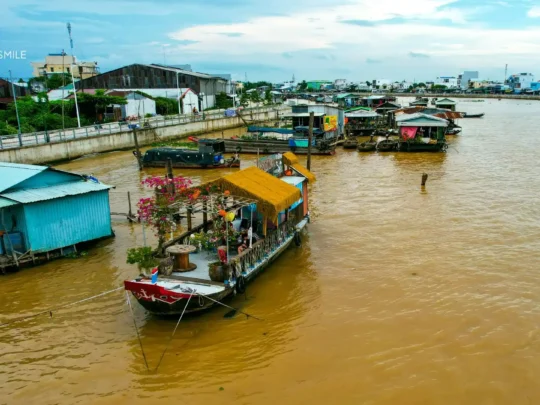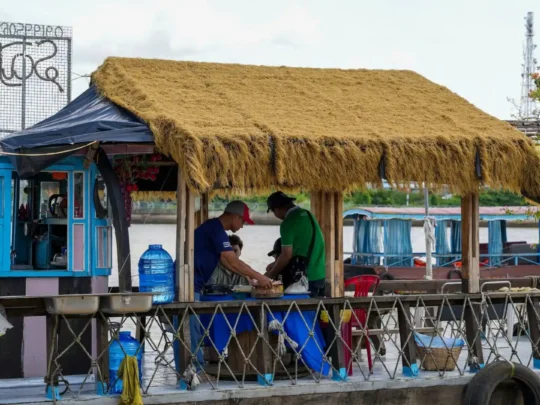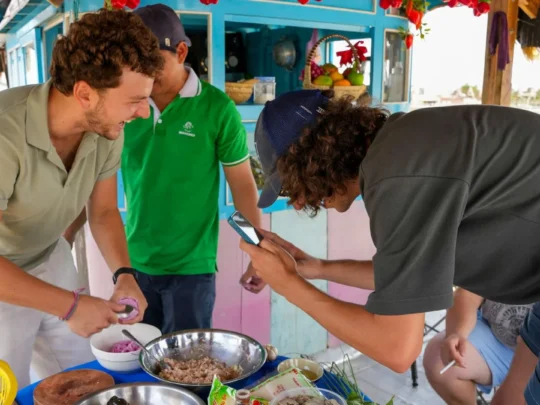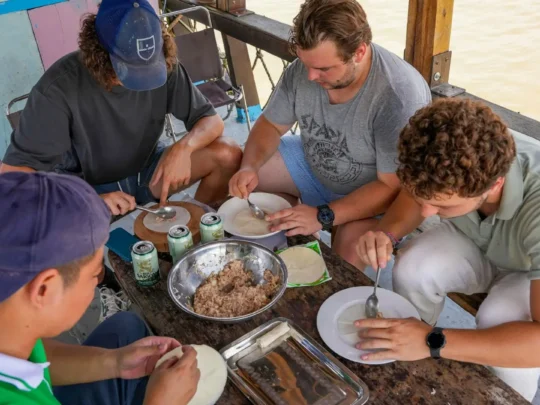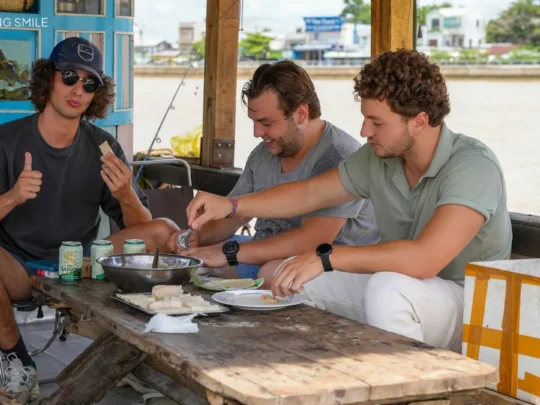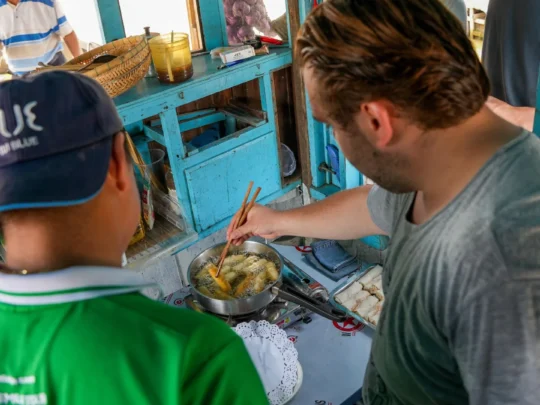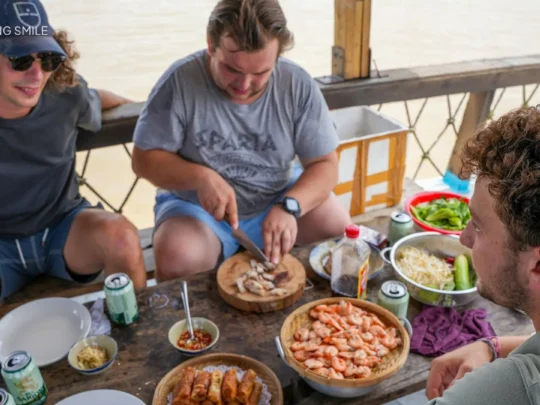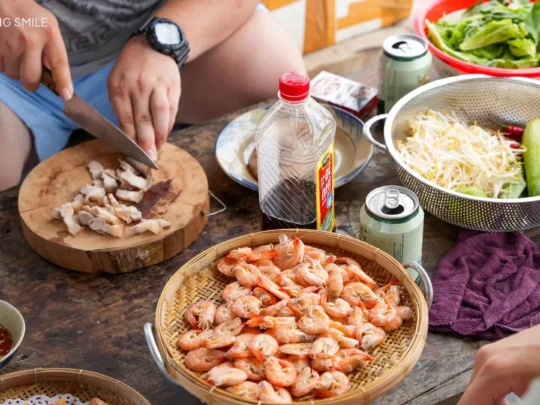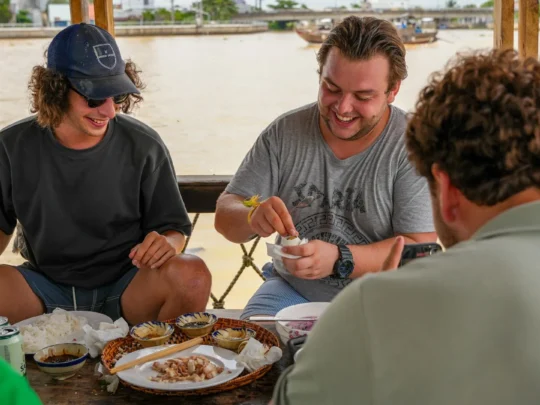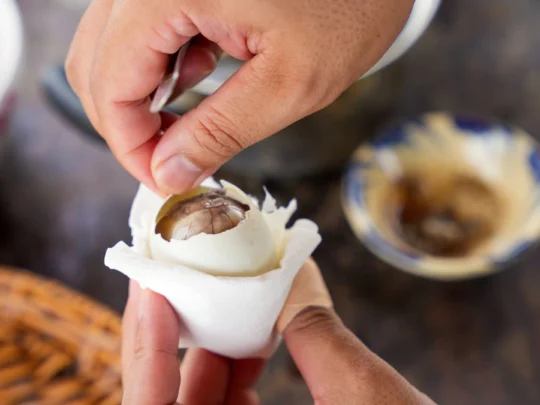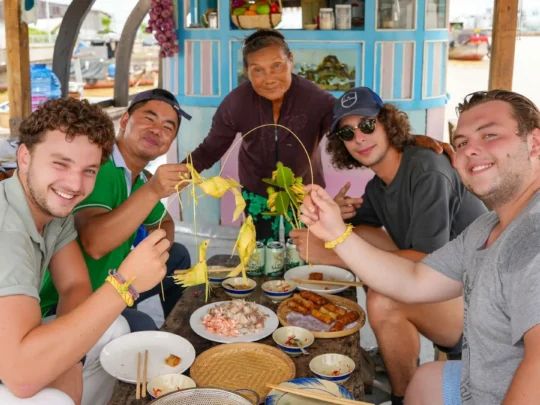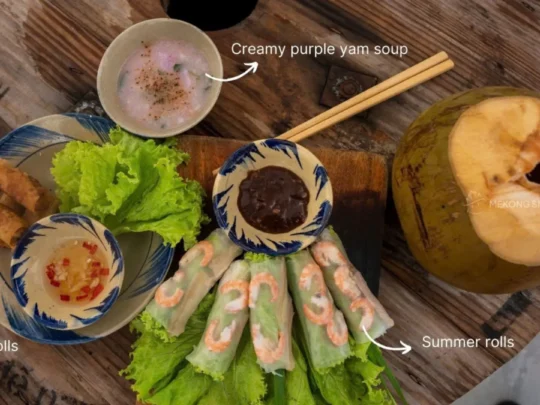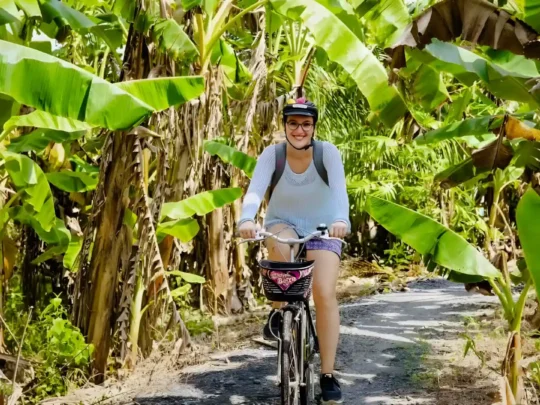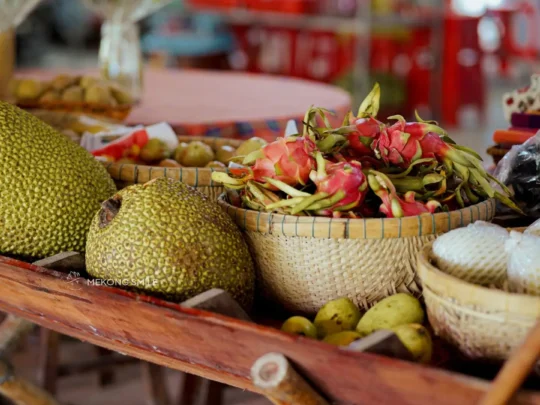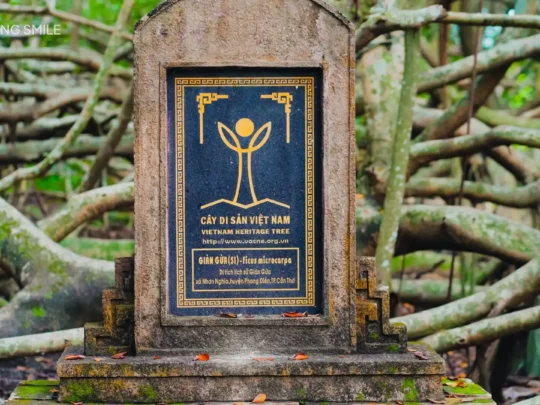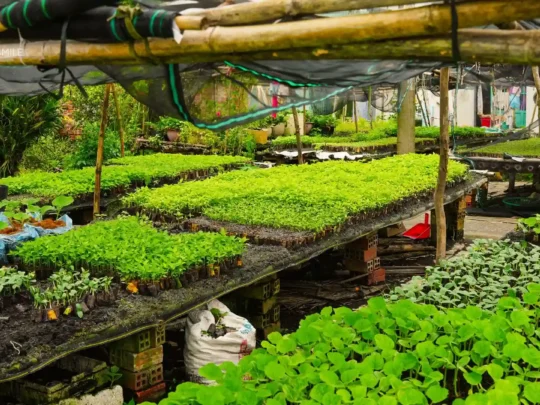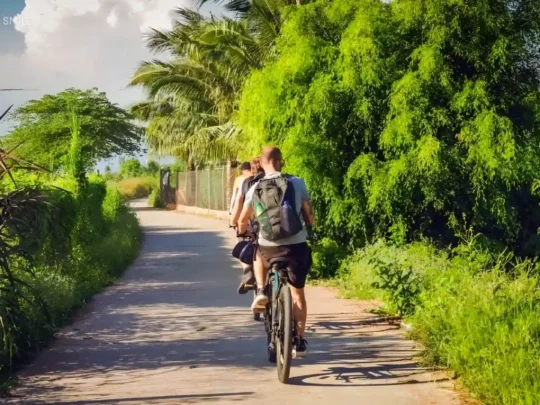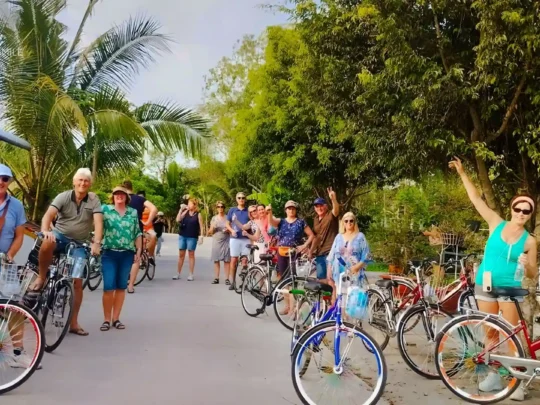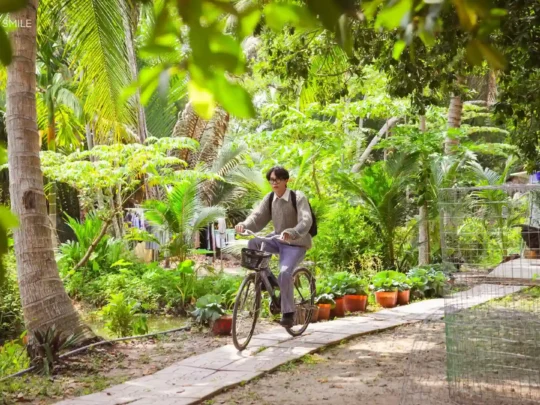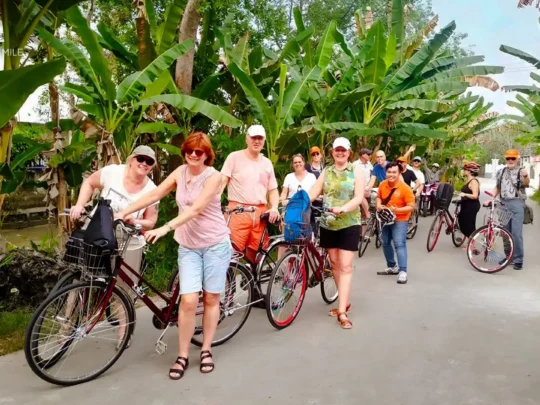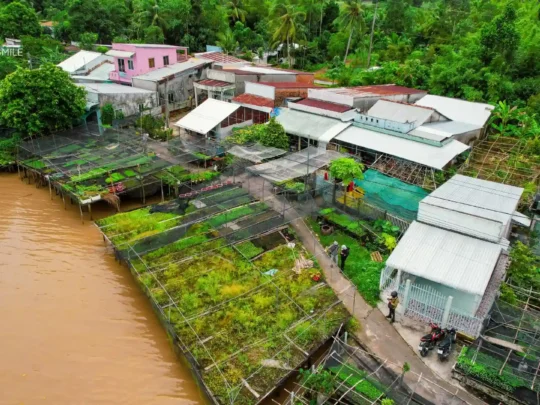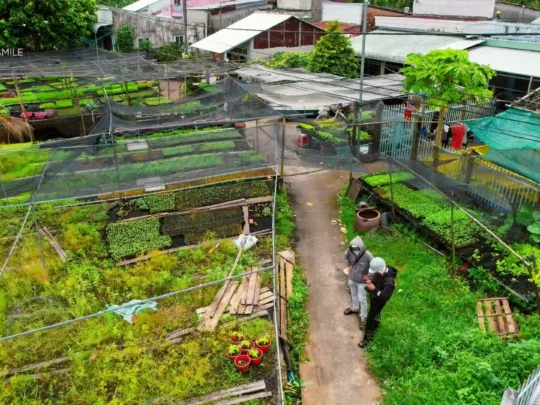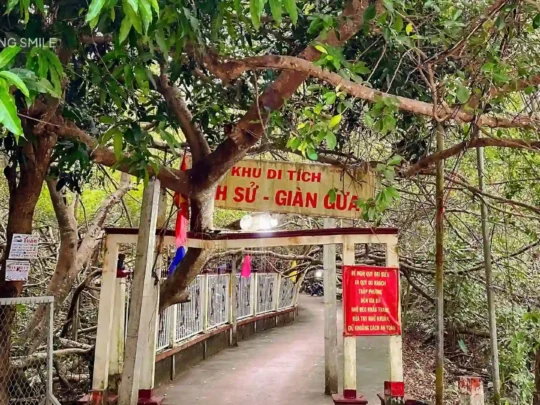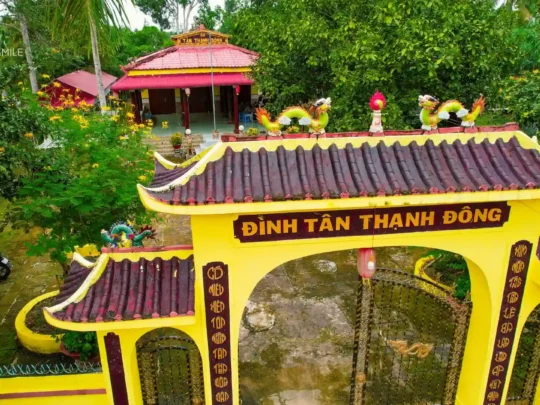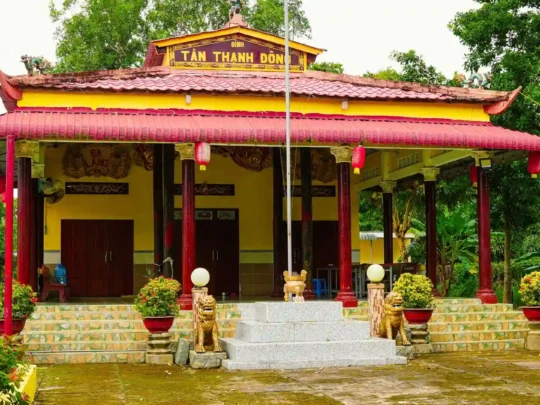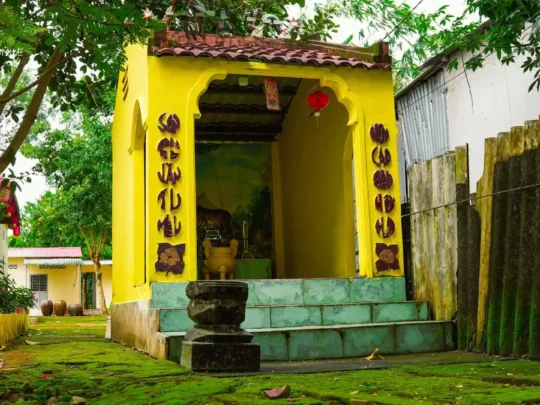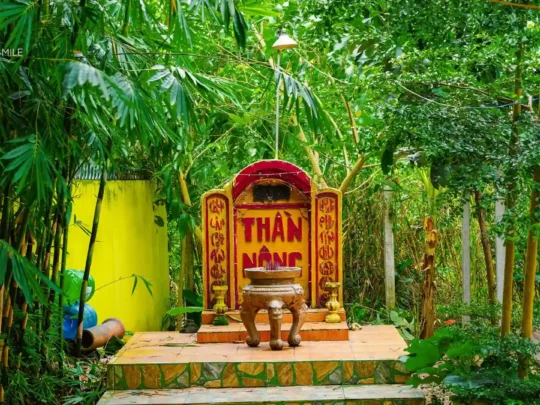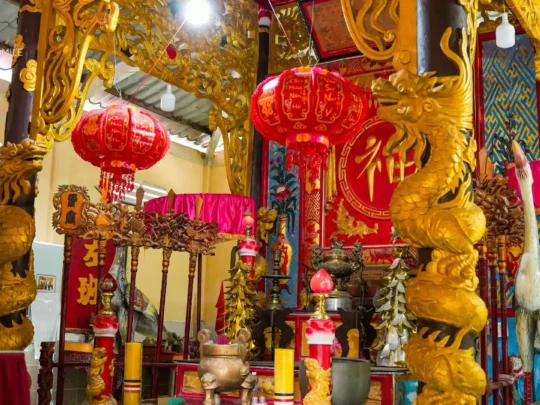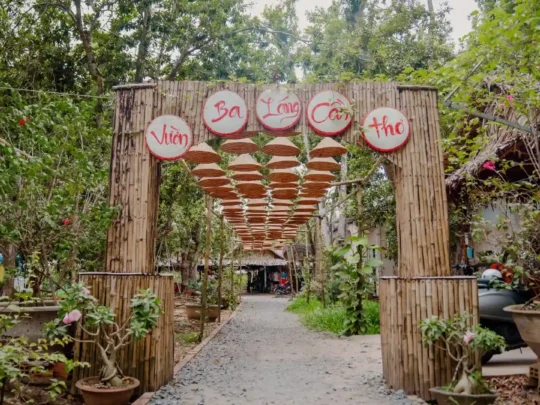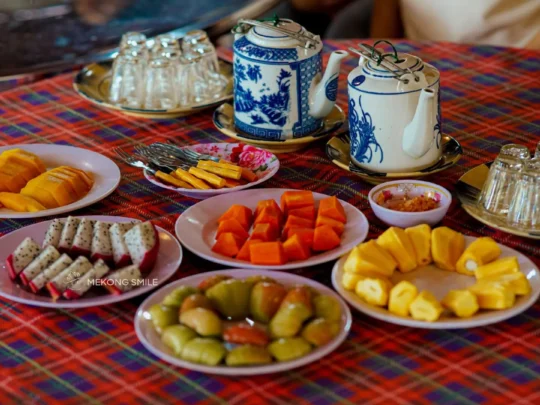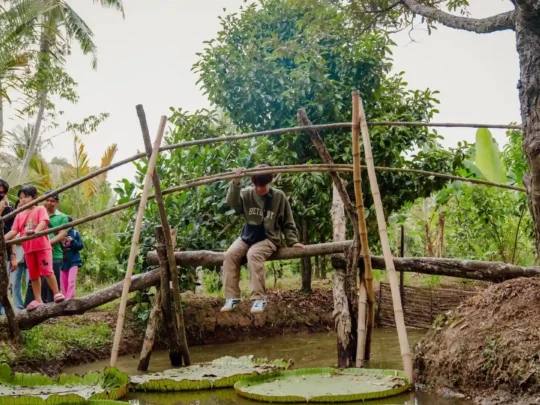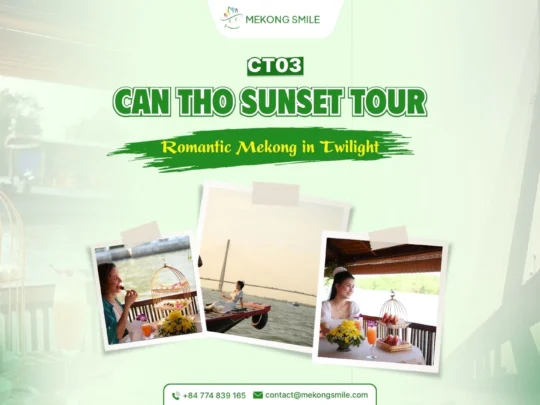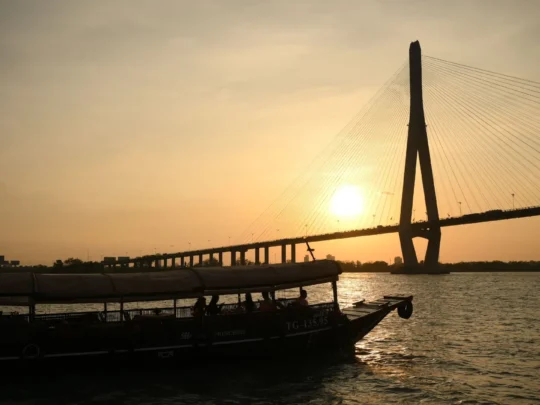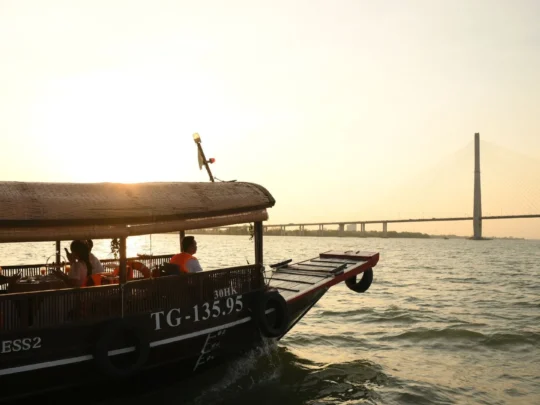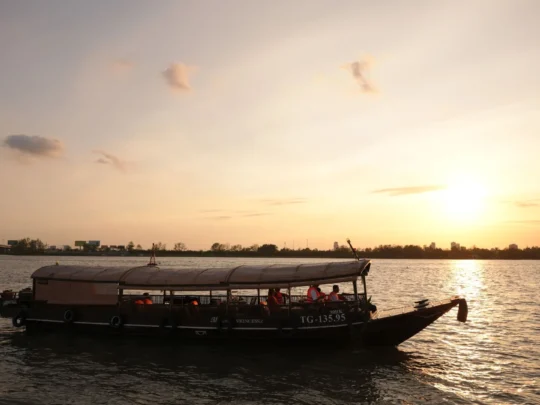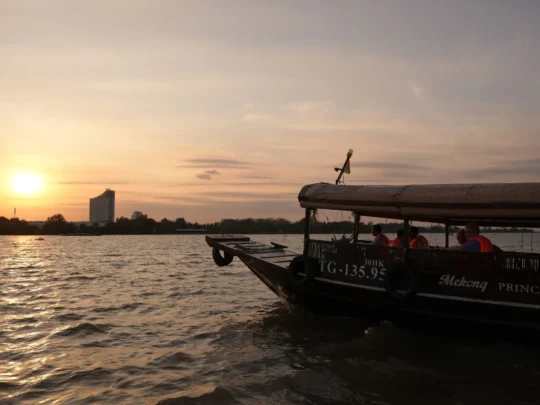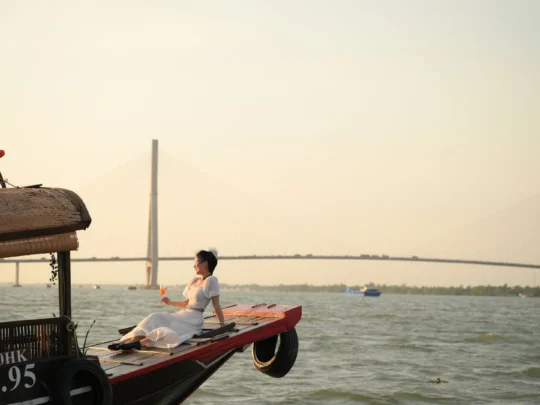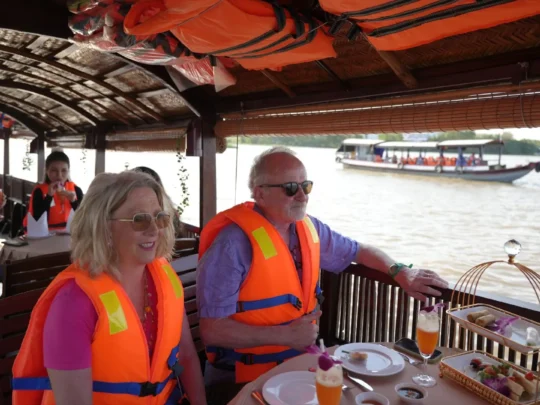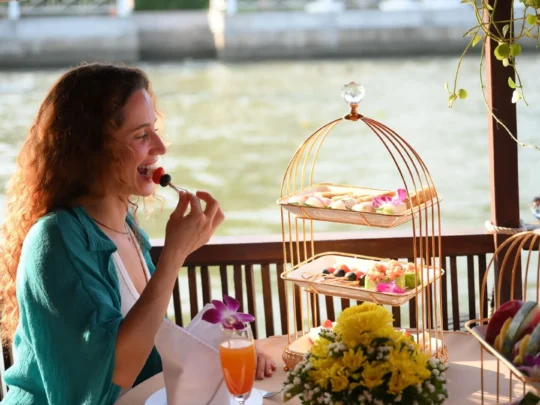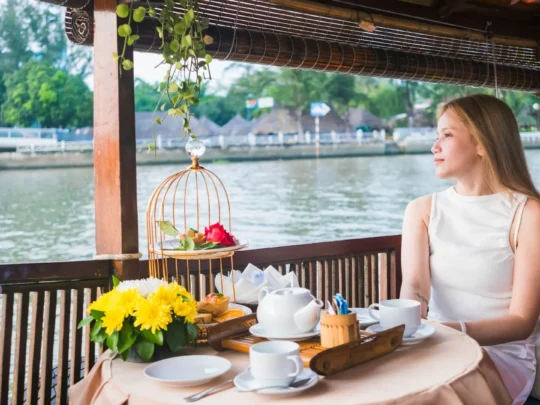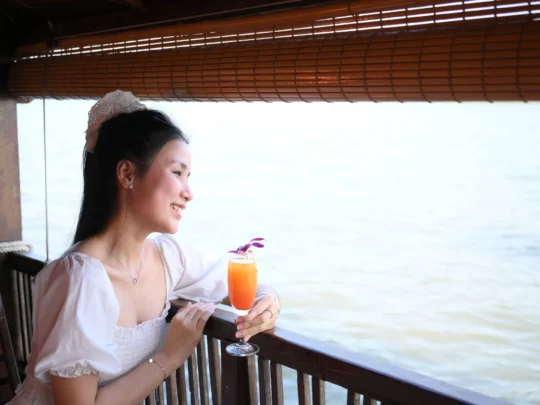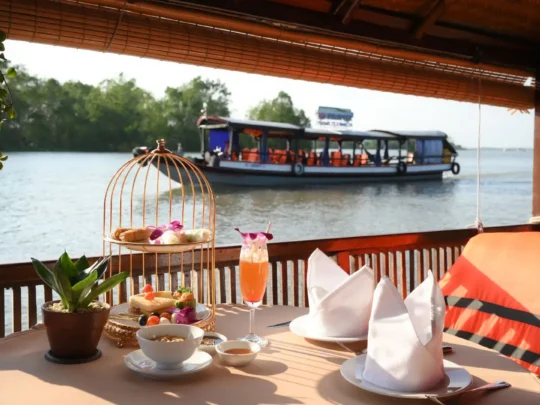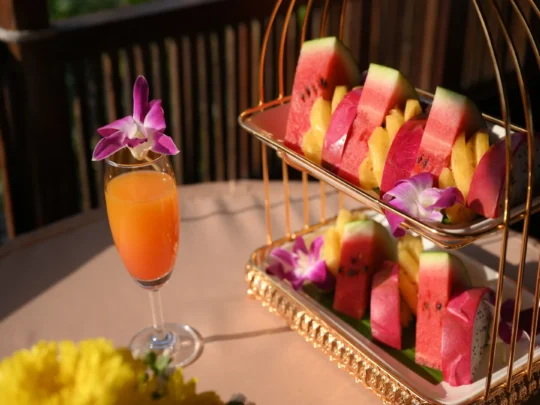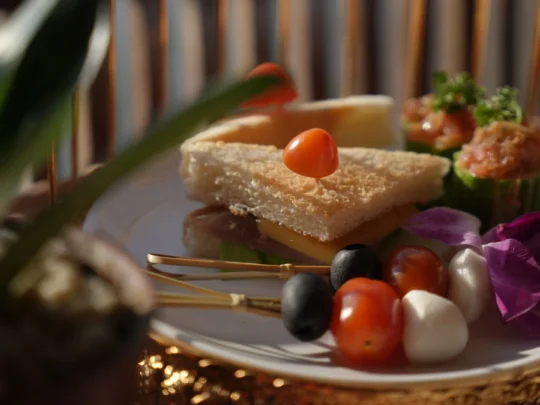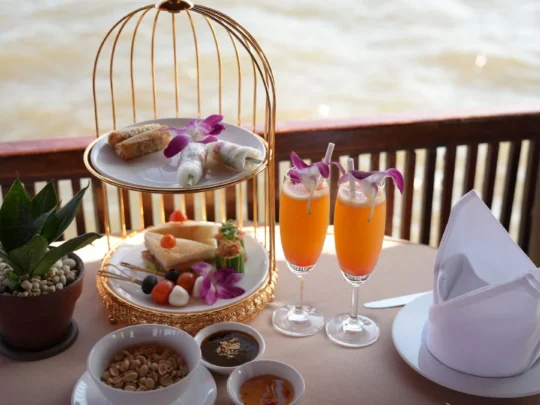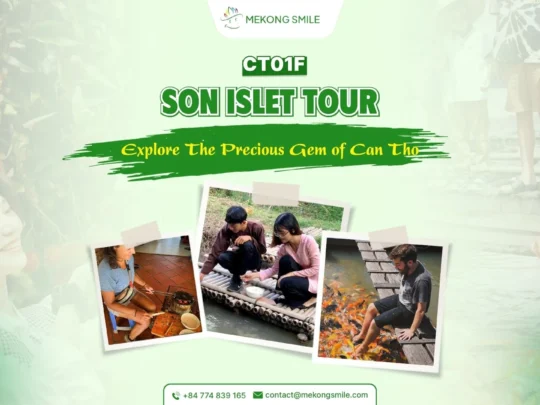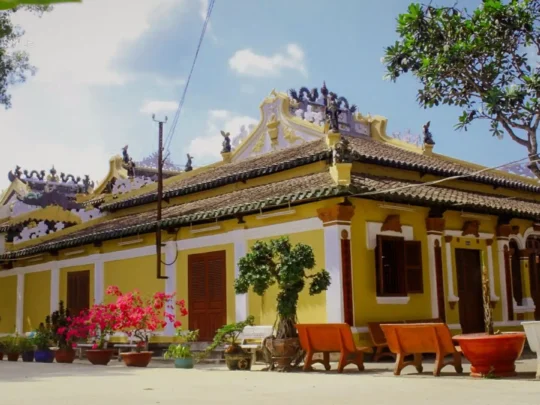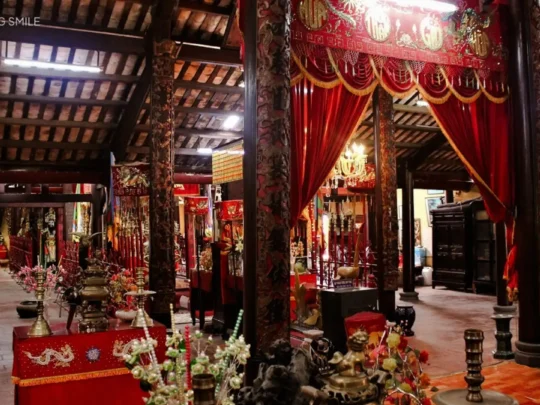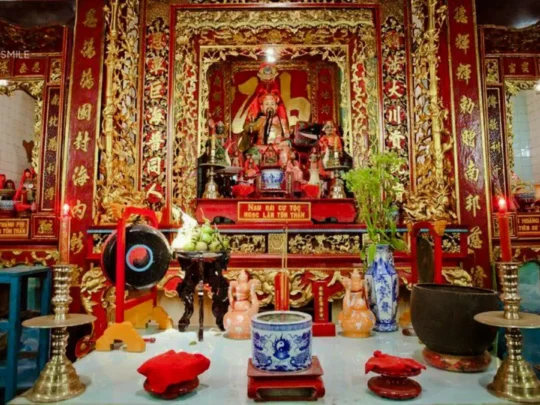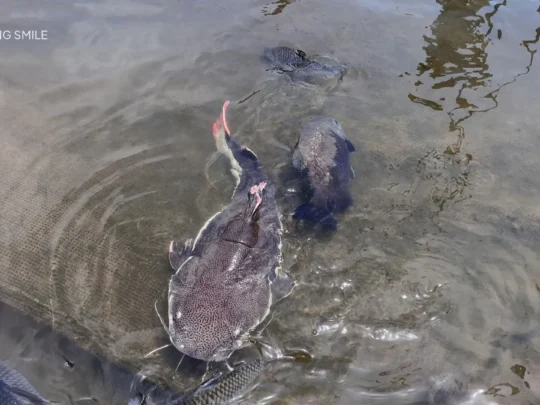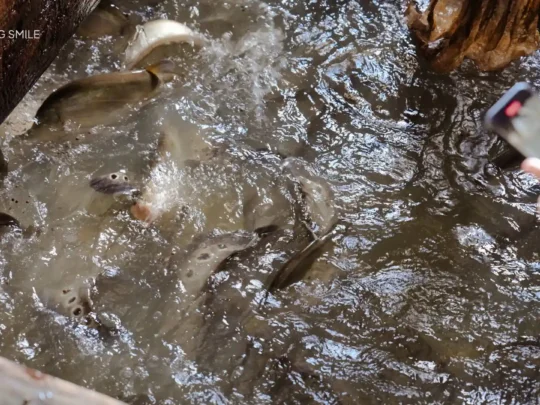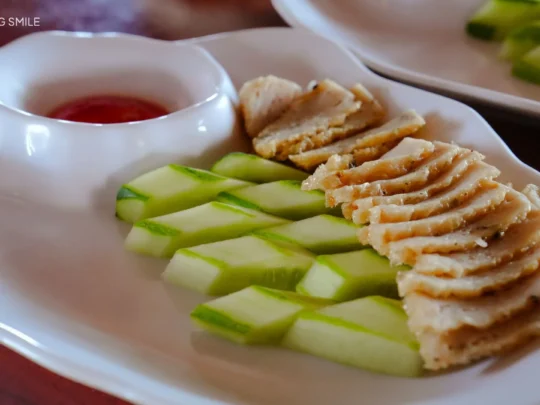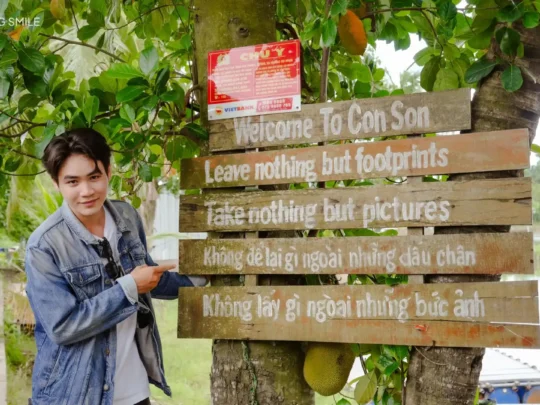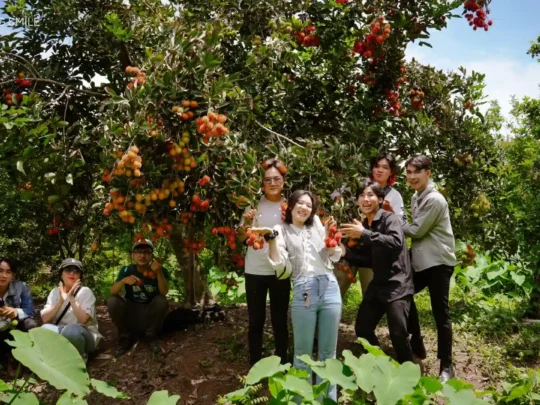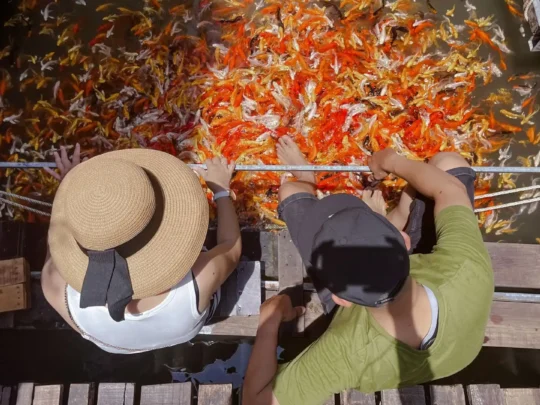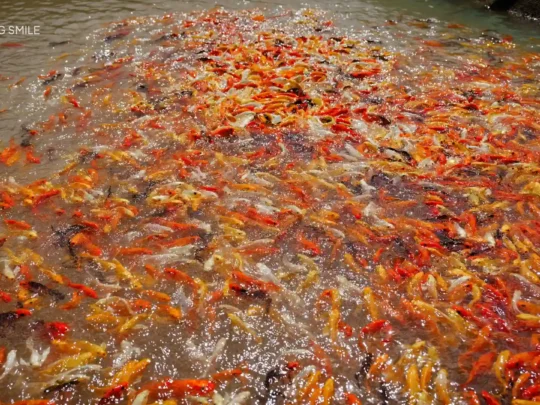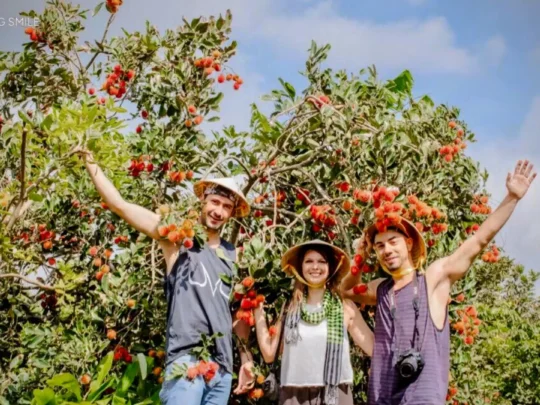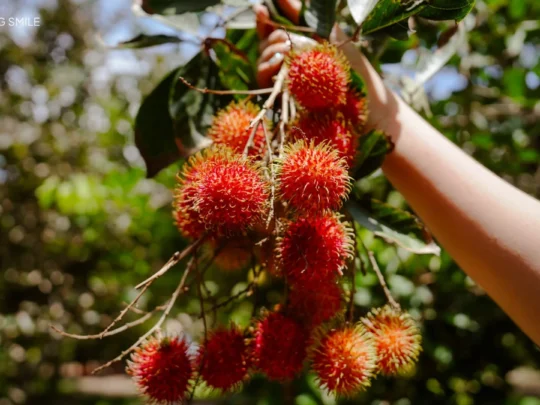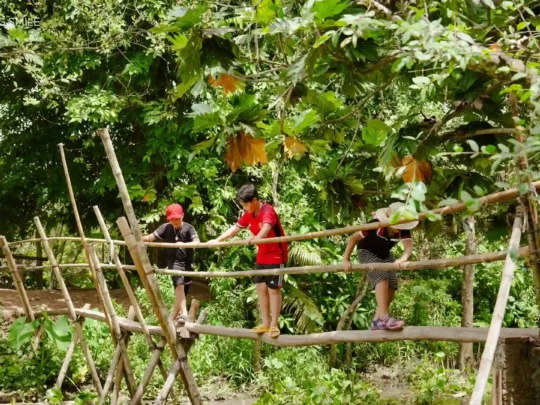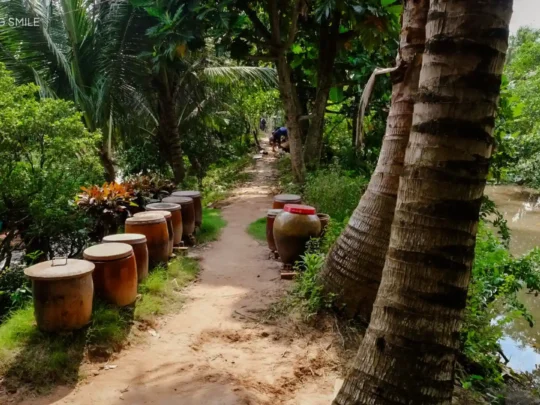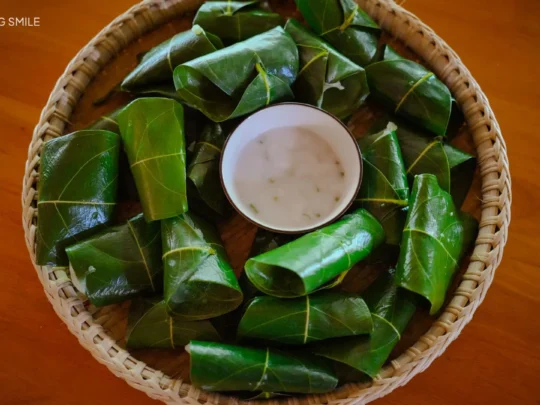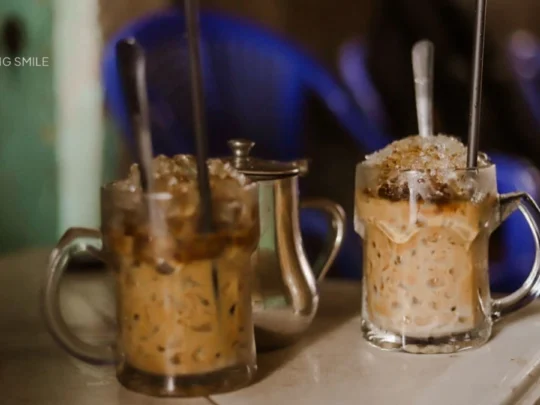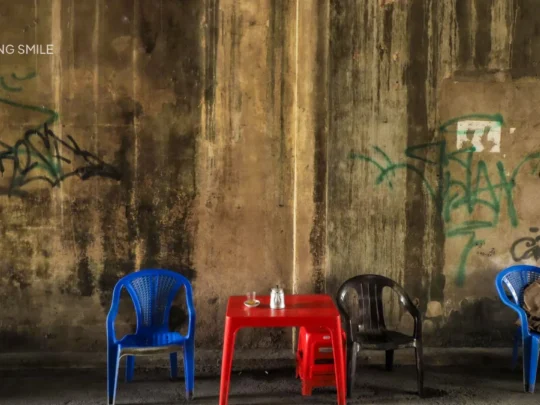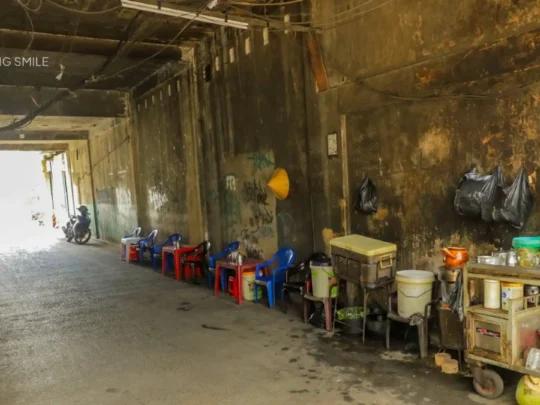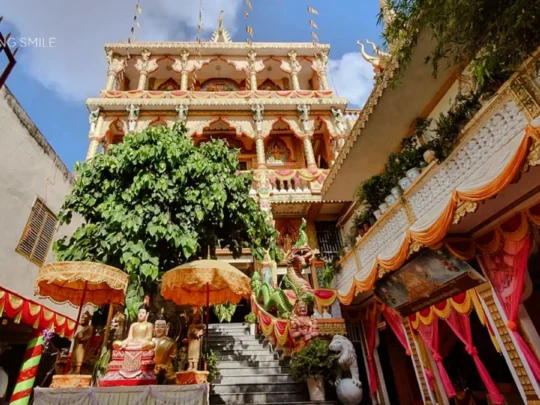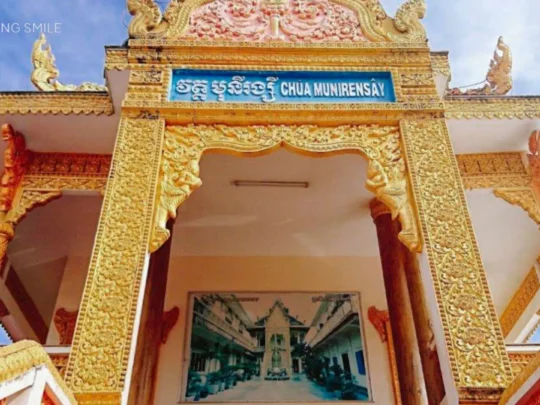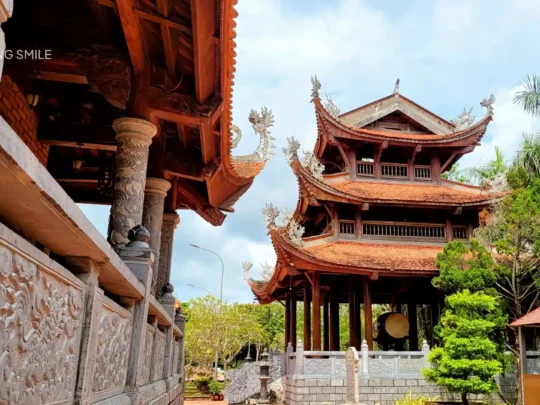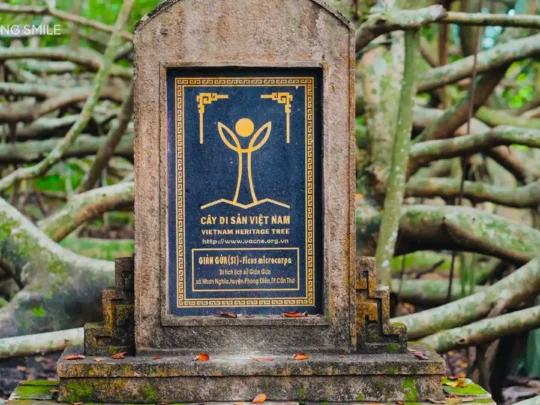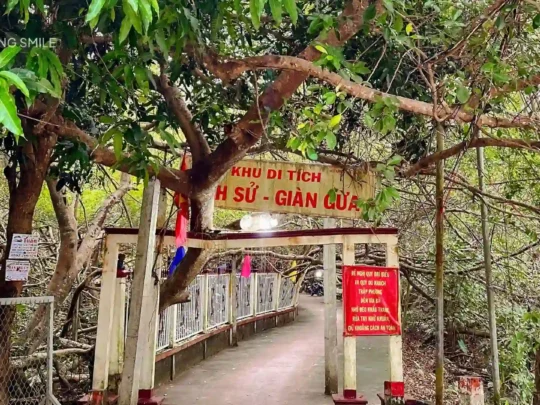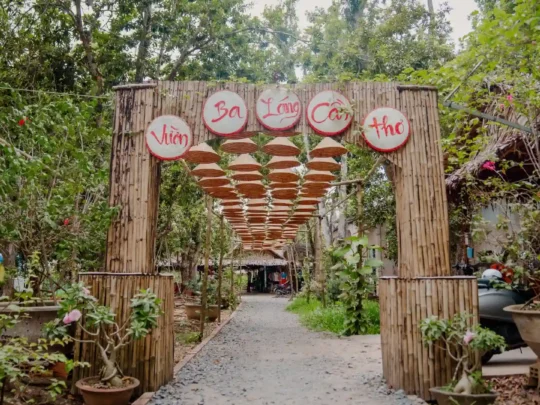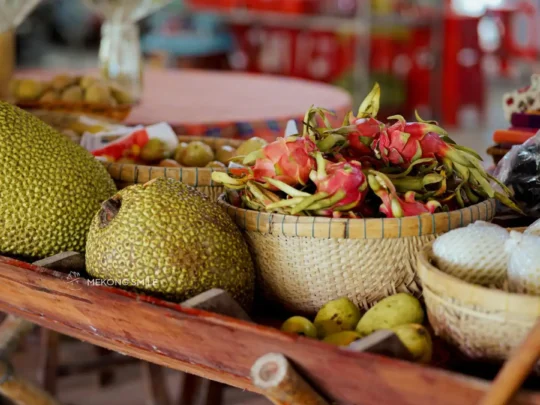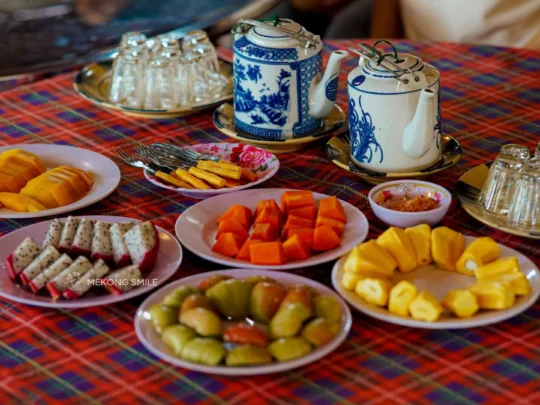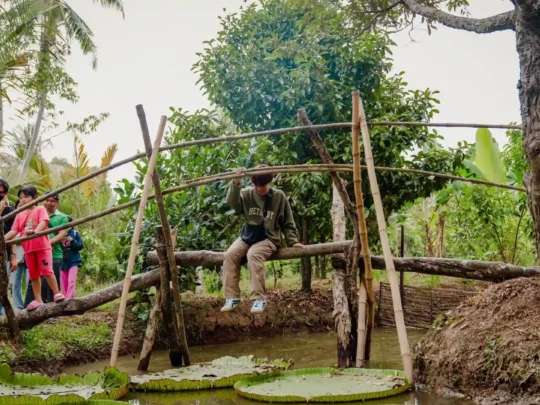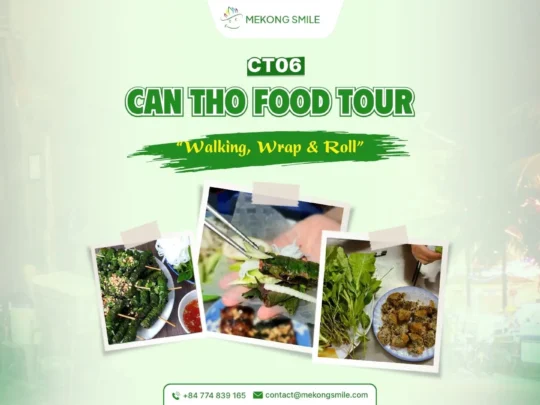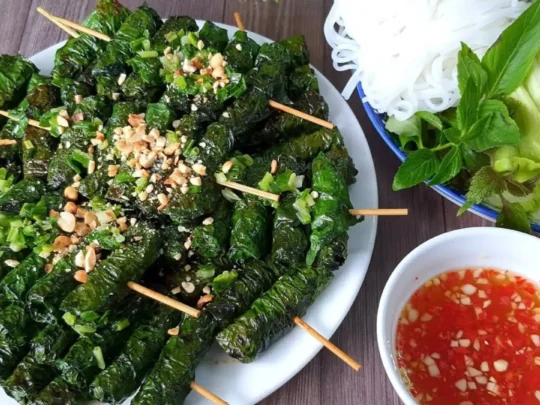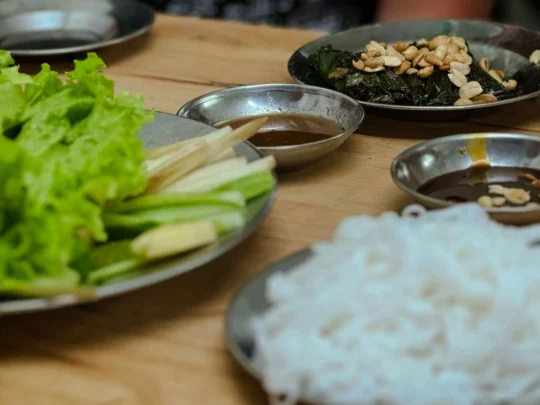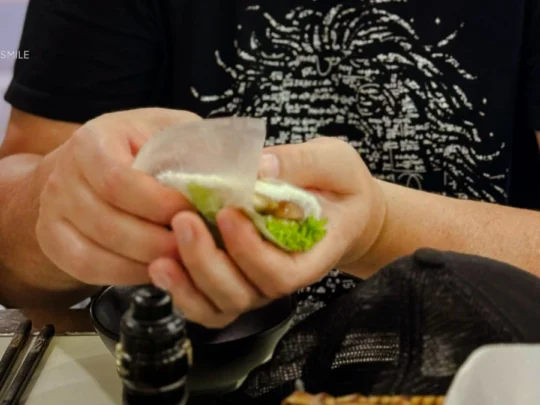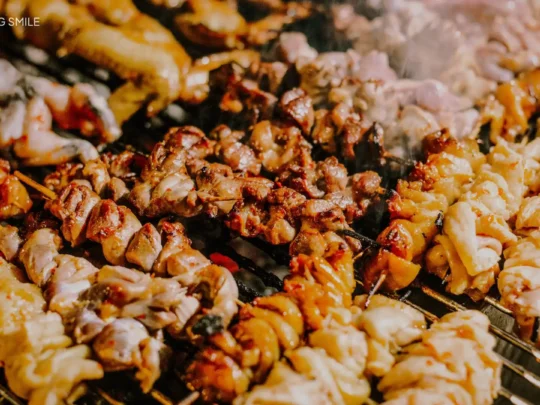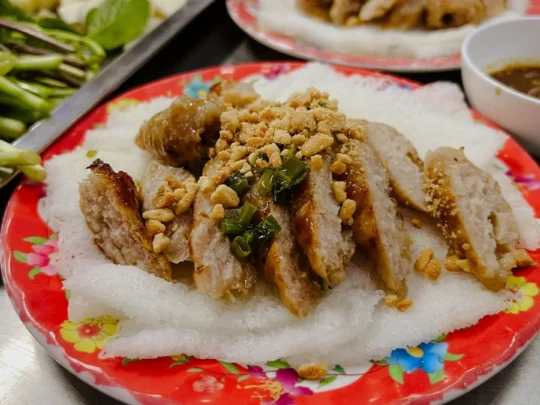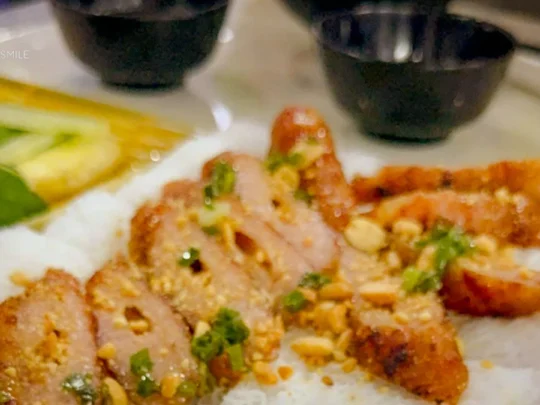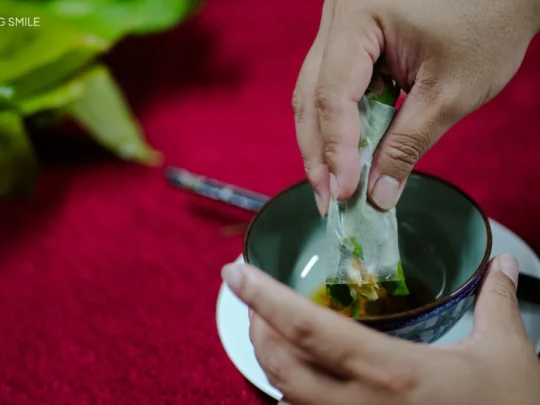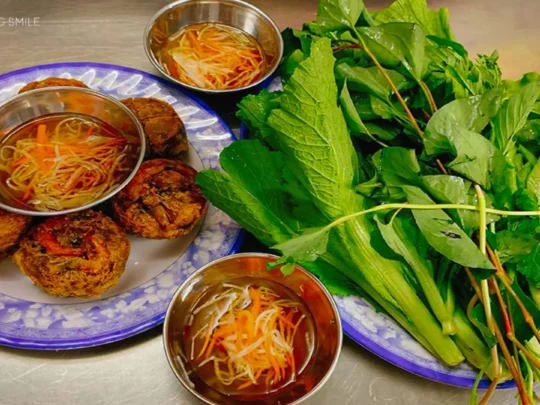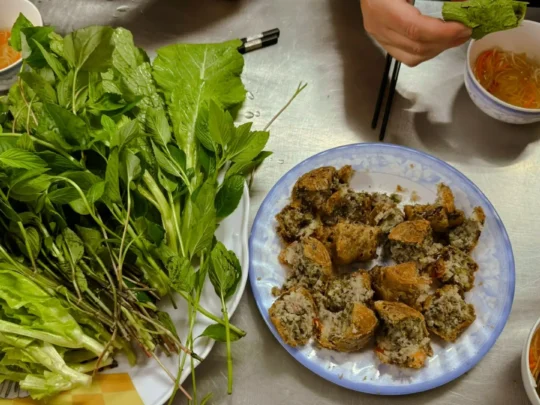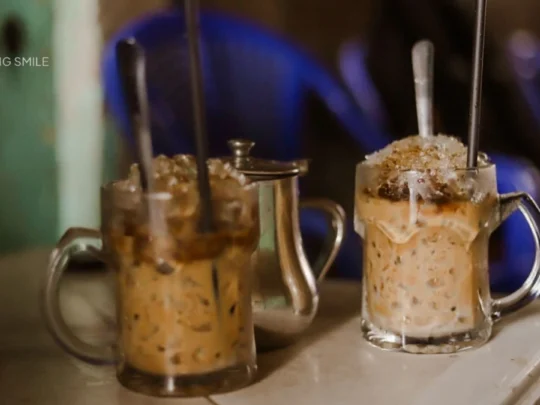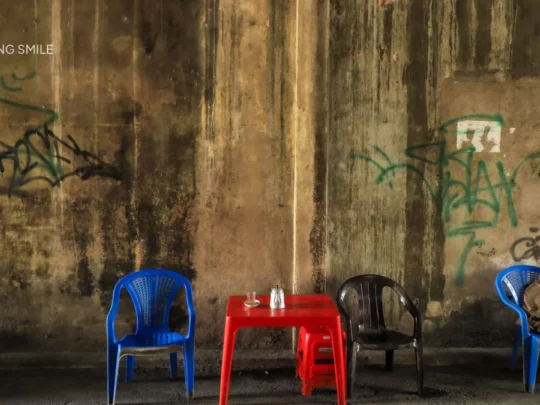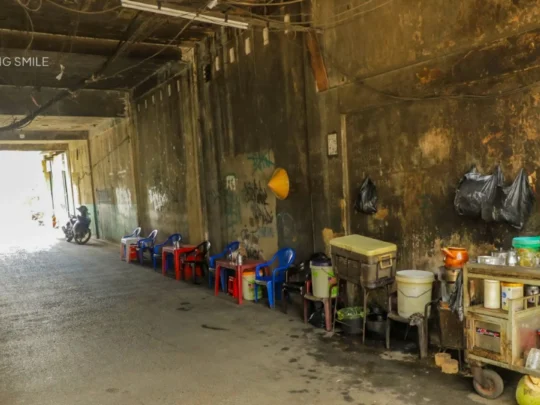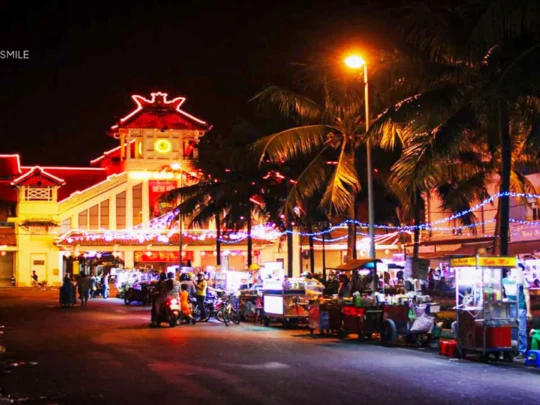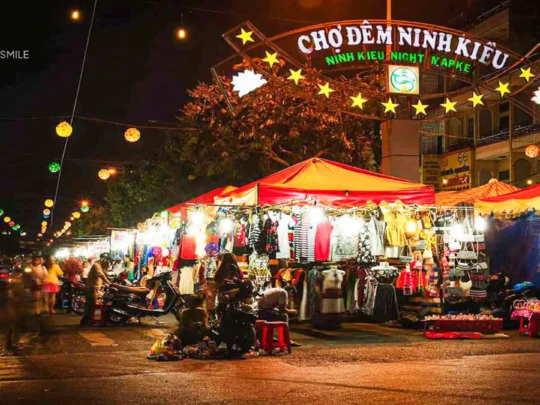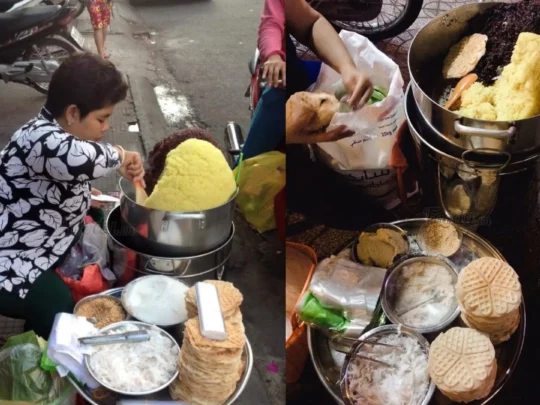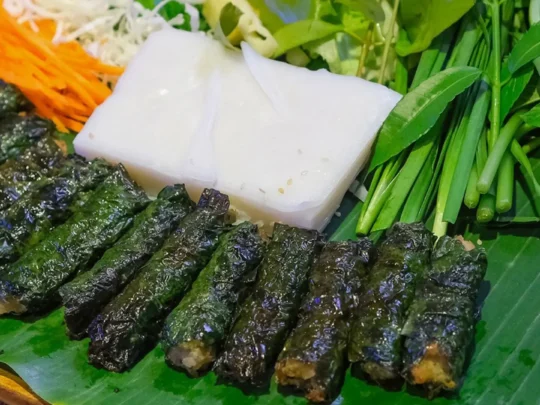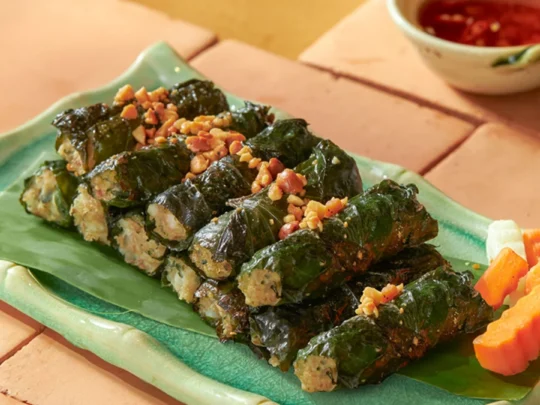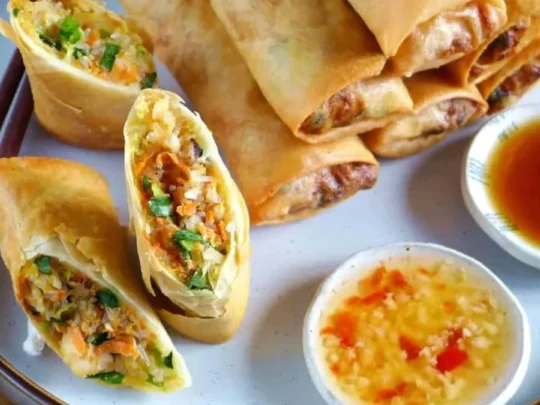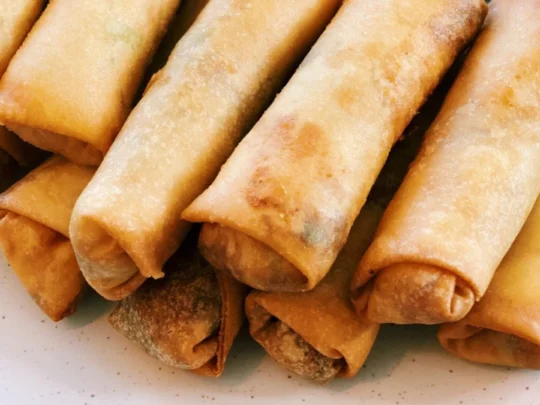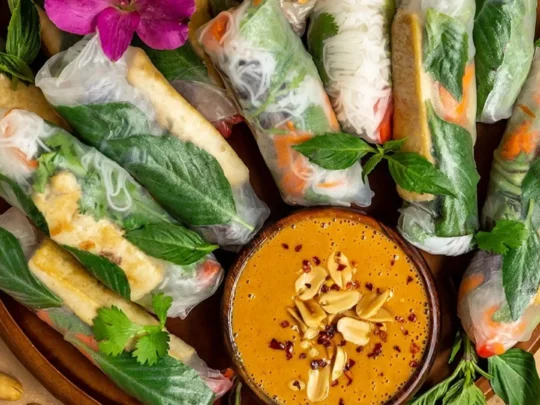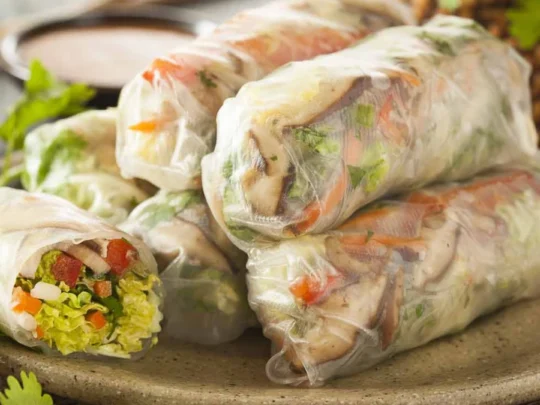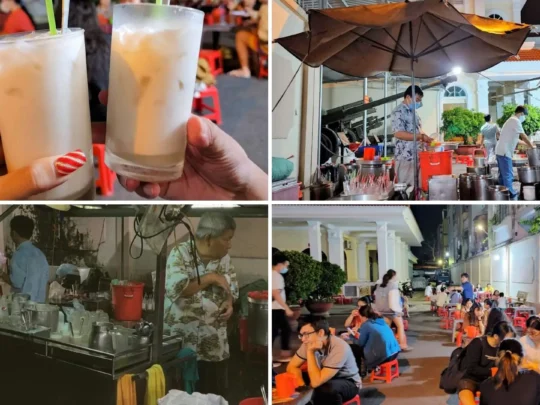Just 10 minutes from downtown Can Tho, Son Islet (Con Son Islet) welcomes travelers to experience the Mekong Delta at its most authentic — peaceful, green, and full of life. In this complete Con Son Islet guide, you’ll discover everything you need to plan your visit with confidence: how to get there, what to see, the best time to go, and insider tips for connecting with local families who keep the island’s traditions alive. Whether you’re seeking fresh tropical fruit, a hands-on cooking experience, or a quiet escape from the city, this article helps you uncover the true charm of Son Islet — one of the Mekong Delta’s most genuine and heartwarming destinations.
Overview of Son Islet
A glance at Son Islet
- Location: Bui Huu Nghia Ward, Binh Thuy District, Can Tho City, Viet Nam
- Setting: Small island in the middle of the Hau River
- Size: 70 hectares (173 acres)
- Population: Fewer than 100 families
- Distance from Can Tho: 6 kilometers / 10-minute ferry ride
- Access: Short ferry from Co Bac Terminal
- Budget: $8-15 USD for full-day experience
- Time needed: Half-day to full-day
- Peak season: April-July (fruit harvest)
- Vibe: Peaceful, authentic, family-friendly
- Language: Vietnamese (limited English)
- Best known for: Authentic community-based tourism, tropical fruit orchards, floating fish farms
Take a closer look at Son Islet – Can Tho’s hidden gem of authentic river life
Why Son Islet Should Be on Your Radar
Son Islet represents the Mekong Delta as it was meant to be experienced – intimate, authentic, and unhurried. With fewer than 100 families, every visit feels personal. The locals haven’t just adapted to tourism; they’ve crafted a model where their traditional way of life is the attraction.
Here’s what makes Son Islet special:
- Authentic Community Tourism: Each household on the islet has developed tourism activities based on what they already do – whether that’s growing fruit, raising fish, or making traditional cakes.
- Unmatched Accessibility: Unlike remote Mekong Delta destinations requiring hours of travel, Son Islet sits just 6 kilometers from Can Tho city center. A 10-minute ferry ride transports you from urban Vietnam to a world where three-leaf boats outnumber motorbikes and fruit trees outnumber buildings.
- Year-Round Appeal: Thanks to the region’s tropical climate and strategic crop rotation among families, there’s always something ripe, something blooming, or something happening on Son Islet, regardless of when you visit.
Experience genuine community-based tourism and heartfelt hospitality
Understanding Son Islet’s Story
The name “Son Islet” comes from the gardenia trees (called “cây sơn” in Vietnamese) that once dominated the landscape. These weren’t ornamental plants – local craftsmen harvested their sap for traditional lacquer work, a technique called “sơn son thiếp vàng” (lacquer with gold inlay) used to create the gorgeous gilded furniture and altars you see in temples and ancient houses across Vietnam.
As demand for natural lacquer declined with industrialization, islanders gradually transitioned to what the land does best: growing fruit and raising fish. The tourism transformation came unexpectedly in 2014 when a group of students filmed an episode of “One Day as a Farmer” on the islet. Local authorities saw potential in the students’ enthusiasm and the families’ willingness to share their lifestyle.
By 2015, Son Islet officially opened to tourists with a unique proposition: visitors wouldn’t just observe Mekong Delta life – they’d participate in it.
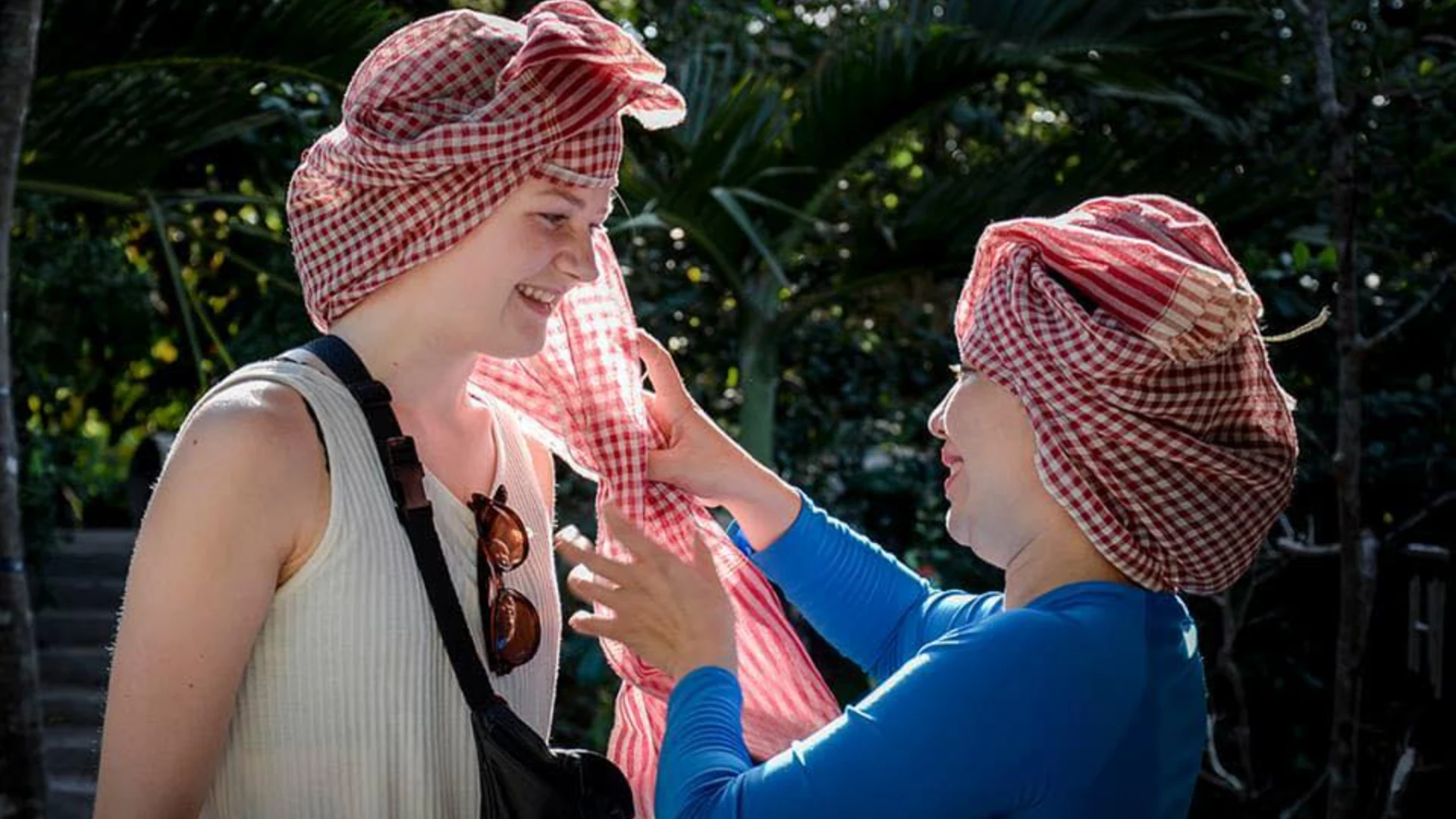
When to Visit Son Islet
The Fruit Season (April to July) – Peak Time
Aim for the April-to-July window if you’re a fruit enthusiast or traveling with children who’ll be thrilled by picking fresh tropical fruit. This is when the orchards burst into their most abundant production:
- May: Rambutans at their peak, with Mr. Ba Binh’s orchard particularly famous
- May-June: Longans in multiple varieties
- April-July: Mangoes, guavas, pomelos, plums, and jackfruit all ripe simultaneously
The trade-off: This is also the busiest period, particularly on weekends and Vietnamese holidays. Book Son Islet Tour at least a week in advance, and consider visiting on weekdays for a more peaceful experience.
The Rest of the Year – Underrated
Here’s a secret: Son Islet remains beautiful and engaging even outside peak fruit season. The temperature stays pleasant year-round, and there’s always something fruiting thanks to the diversity of crops.
- August-November (Rainy Season): Fewer tourists, greener landscapes, and you’ll see the river life at its most active. Just remember to pack a raincoat.
- December-March: Dry season makes for perfect walking weather, and you’ll have fruit like star apples, milk apples, and guavas.
Best Time of Day
Son Islet Tour typically start at either 9:00 AM or 2:00 PM:
- Morning tours benefit from cooler temperatures and are ideal if you’re combining Son Islet with an early floating market visit.
- Afternoon tours offer spectacular lighting for photography and let you see the storks returning to their roosting areas around 4:00-5:00 PM – a genuine highlight.
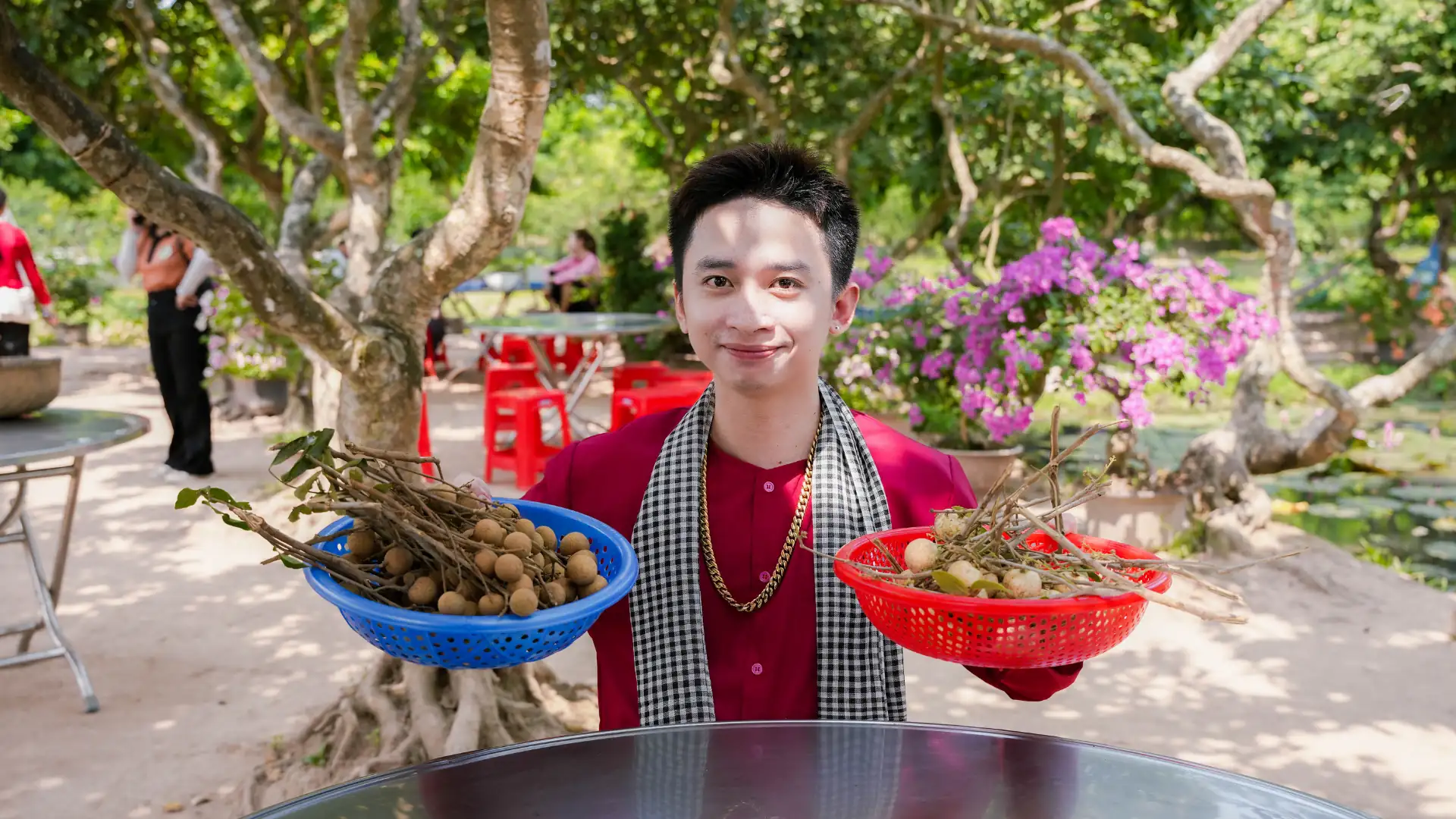
Getting to Son Islet: Your Step-by-Step Guide
From Can Tho City Center
The journey to Son Islet is straightforward, though navigating Can Tho’s streets can be confusing for first-timers. Here’s the reliable route:
- Head to Co Bac Ferry Terminal in Binh Thuy District:
- Take Nguyen Trai Street heading west – Cross the Nguyen Trai Bridge – Continue on Cach Mang Thang 8 Street – Cross Binh Thuy Bridge – Turn onto Le Hong Phong Street – At the intersection with Dang Van Day Street, turn right
- Follow signs to Co Bac Ferry Terminal (Bến Phà Cô Bác)
- At the ferry terminal:
- Park your motorbike or car in the designated area (small fee)
- Look for the ferry boats to Son Islet – locals will point you in the right direction
- Ferries run regularly throughout the day (roughly every 20-30 minutes)
- Cost: 15,000-20,000 VND per person, per way
- Duration: 5-10 minutes across the river
Pro tip: Google Maps works well in Can Tho, but download offline maps just in case. Simply search “Bến Phà Cô Bác” for the ferry terminal.
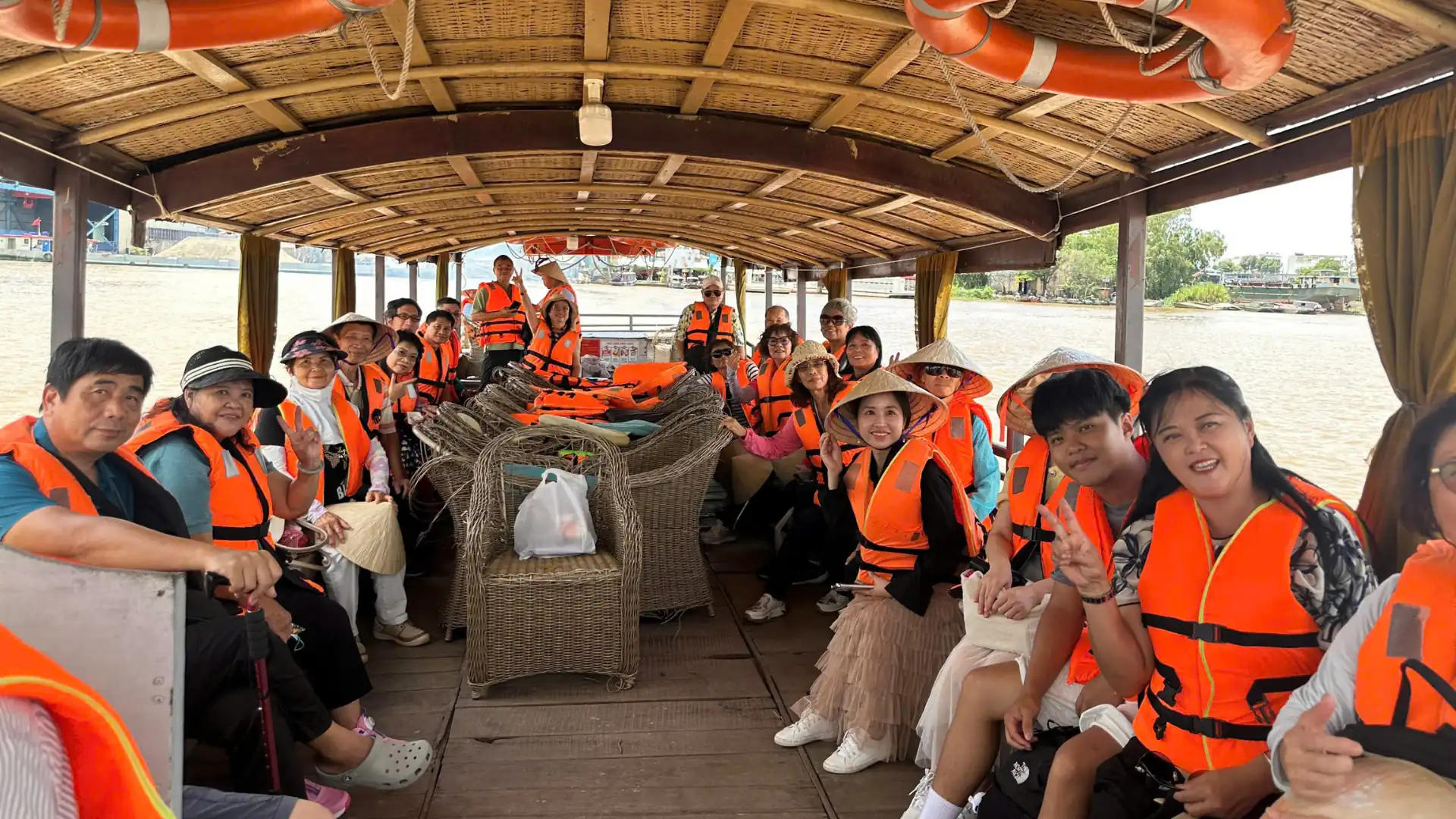
What About Motorbikes on the Islet?
You can take motorbikes on the larger ferries, but experienced travelers strongly advise against it. The paths on Son Islet are narrow, unpaved, and designed for pedestrians and small boats. You’ll spend more time navigating than enjoying. Walking and occasional boat rides are the authentic and practical way to explore.
Coming from Further Away
From Ho Chi Minh City:
- Bus: 4-5 hours, 130,000-180,000 VND (companies like Phuong Trang run comfortable routes)
- Flight to Can Tho: 1 hour, 1,700,000-2,000,000 VND, then taxi/Grab to ferry terminal
From other Mekong Delta destinations: Regular bus connections link Can Tho with My Tho, Vinh Long, and Ben Tre. Can Tho is the regional hub, so connections are frequent and affordable.
What to Do on Son Islet: The Complete Experience
Wander Through Tropical Fruit Orchards
This is the heart of the Son Islet experience. The orchards here aren’t commercial plantations – they’re family gardens that have been cultivated for generations, where multiple fruit varieties grow in beautiful, organized chaos.
How it works: Most orchards charge around 60,000 VND for entry, which includes unlimited fruit tasting. You can pick and eat as much ripe fruit as you can manage.
What you’ll find:
- Rambutans: Hairy red exteriors hiding sweet, translucent flesh
- Longans: Similar to lychee but with a more intense, musky sweetness
- Guavas: Crunchy and refreshing, eaten with chili salt
- Star apples: Beautiful purple skin and sweet, milk-like flesh
- Pomelos: Giant citrus fruits, sweet and tangy
- Mangoes: Multiple varieties depending on the season
- Durians: If you’re brave enough to try the “king of fruits”
The best part: Garden owners or their families often accompany visitors, explaining each fruit’s characteristics and showing you how locals eat them (salt and chili with guava, for instance, or the proper technique for eating rambutan without getting the seed stuck in your throat).
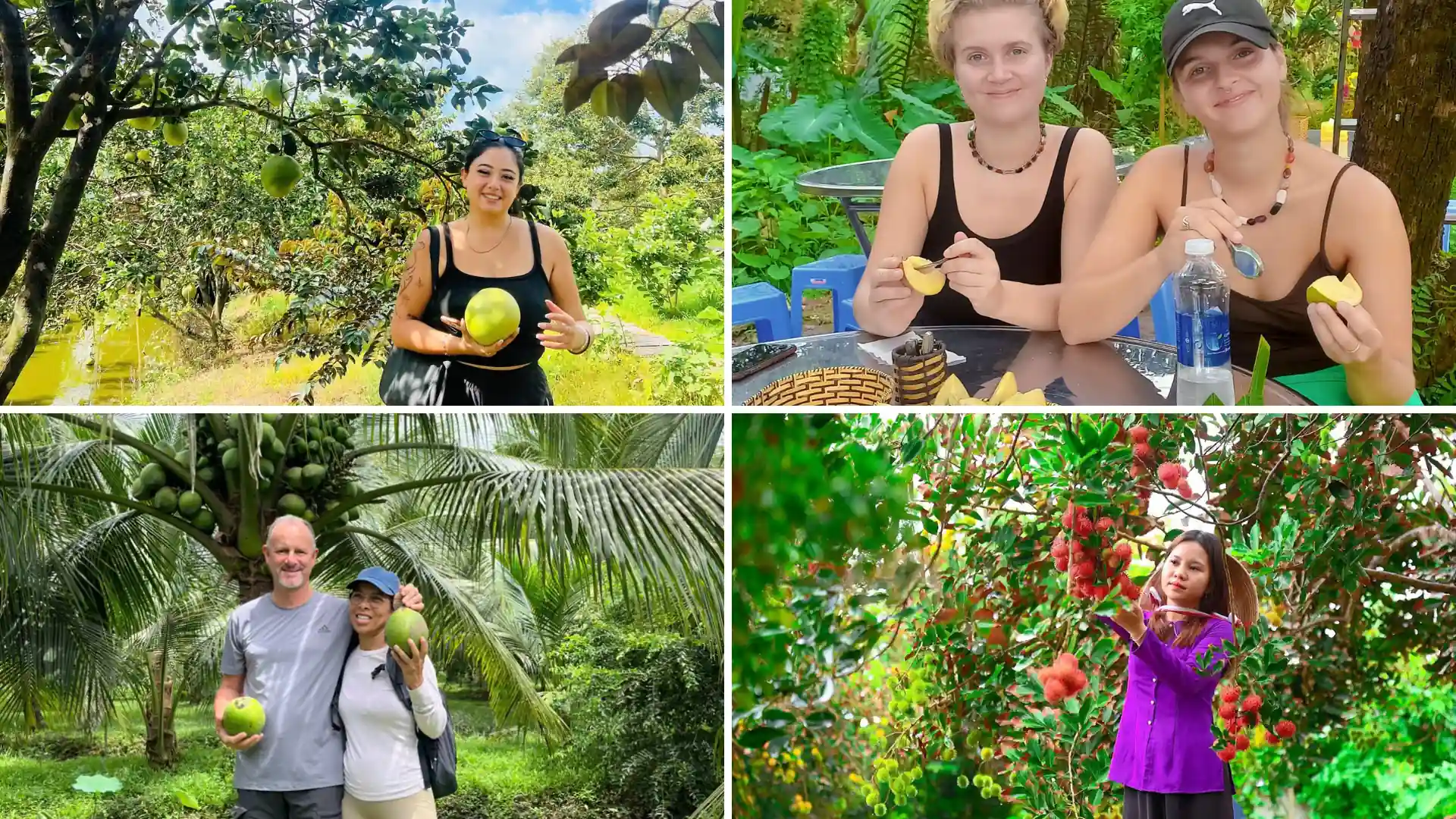
Explore Floating Fish Farms
The Hau River surrounding Son Islet hosts dozens of floating fish farms – essentially houseboats where families live while raising fish in submerged nets below their homes. These aren’t small operations; some farms contain thousands of fish representing species you’ve likely never seen before.
Bay Bon Fish Farm, run by Mr. Ly Van Bon since 2015, is the most established and visitor-friendly. Here you’ll encounter:
- Common species: Catfish, carp, featherback fish, and those mesmerizing Koi with their orange, white, and black patterns
- Rare and unusual: Zig-zag eels, fire eels, redtail catfish, black sharkminnow, and tigerfish
Experiences available:
- Fish feeding: Watch hundreds of fish surge to the surface in a feeding frenzy
- Koi massage: Dip your feet in a tank and let Koi nibble dead skin (surprisingly popular!)
- “Flying snakehead fish” performance: A unique Can Tho tradition where trained snakehead fish leap dramatically from the water – it sounds ridiculous, but it’s genuinely entertaining
Time needed: 45-60 minutes for a thorough visit
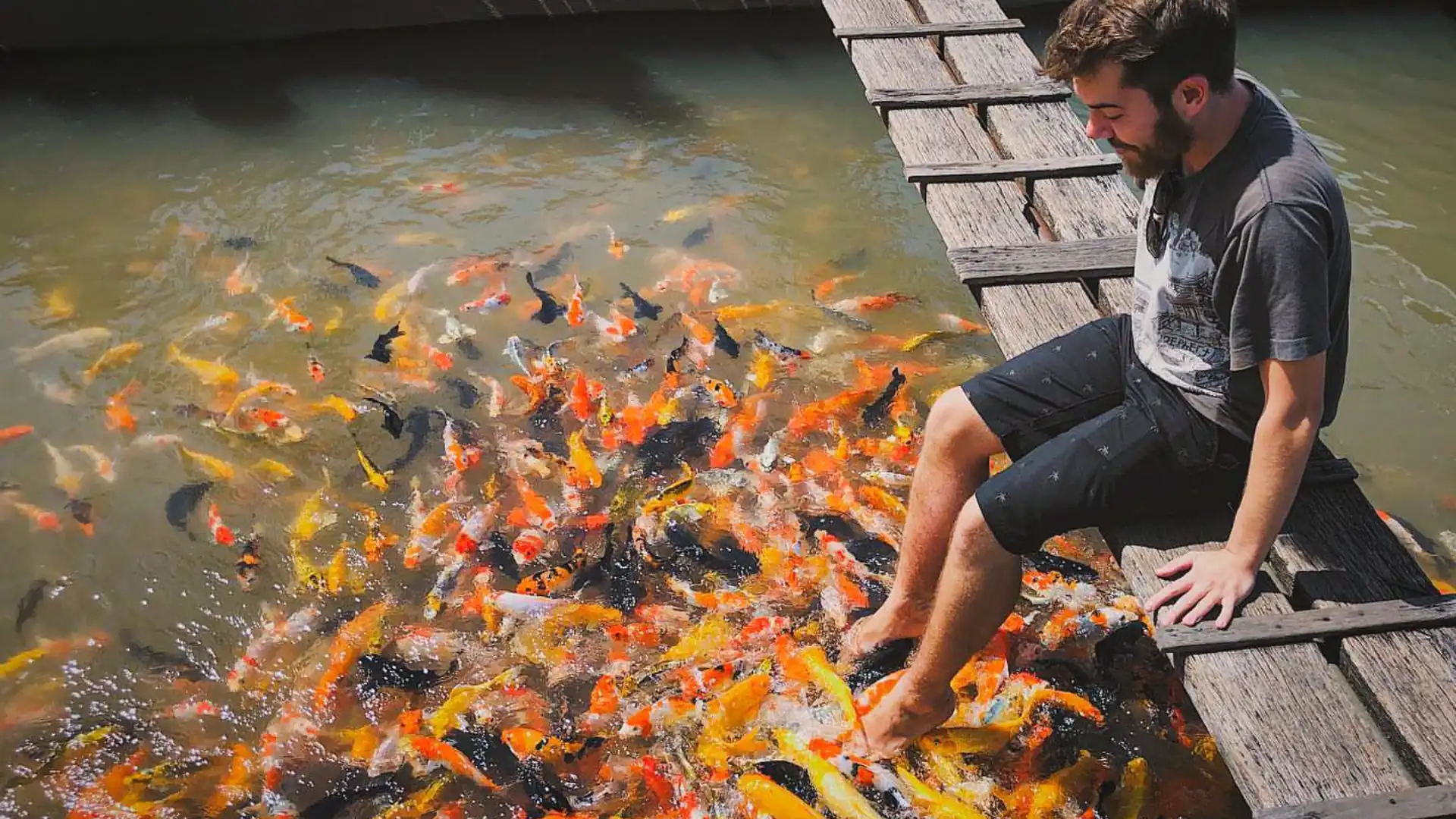
Learn Traditional Cake Making
Vietnamese cuisine is deeply regional, and Southern Vietnam has its own repertoire of traditional cakes and snacks. On Son Islet, local families have turned their kitchens into informal cooking schools where you can learn to make:
- Bánh Khọt (Vietnamese mini pancakes): Crispy rice flour cups topped with shrimp, eaten with fresh herbs and fish sauce
- Bánh Xèo (Sizzling cake): Crispy crepe filled with pork, shrimp, and bean sprouts – named for the sizzling sound it makes when batter hits the hot pan
- Bánh Lá Mít (Jackfruit leaf cake): Sweet or savory fillings wrapped in jackfruit leaves and steamed
How it works: The experience is hands-on. You’ll join the host in their kitchen, help prepare ingredients, learn the proper techniques (getting bánh xèo perfectly crispy takes skill), and then eat what you’ve made. The hosts are patient, encouraging, and seem to genuinely enjoy teaching visitors.
Time needed: 60-90 minutes
Cultural note: This isn’t just cooking – it’s cultural transmission. These recipes come from grandmothers and great-grandmothers, and learning them connects you to the domestic life of the Mekong Delta in a way that restaurant meals never could.
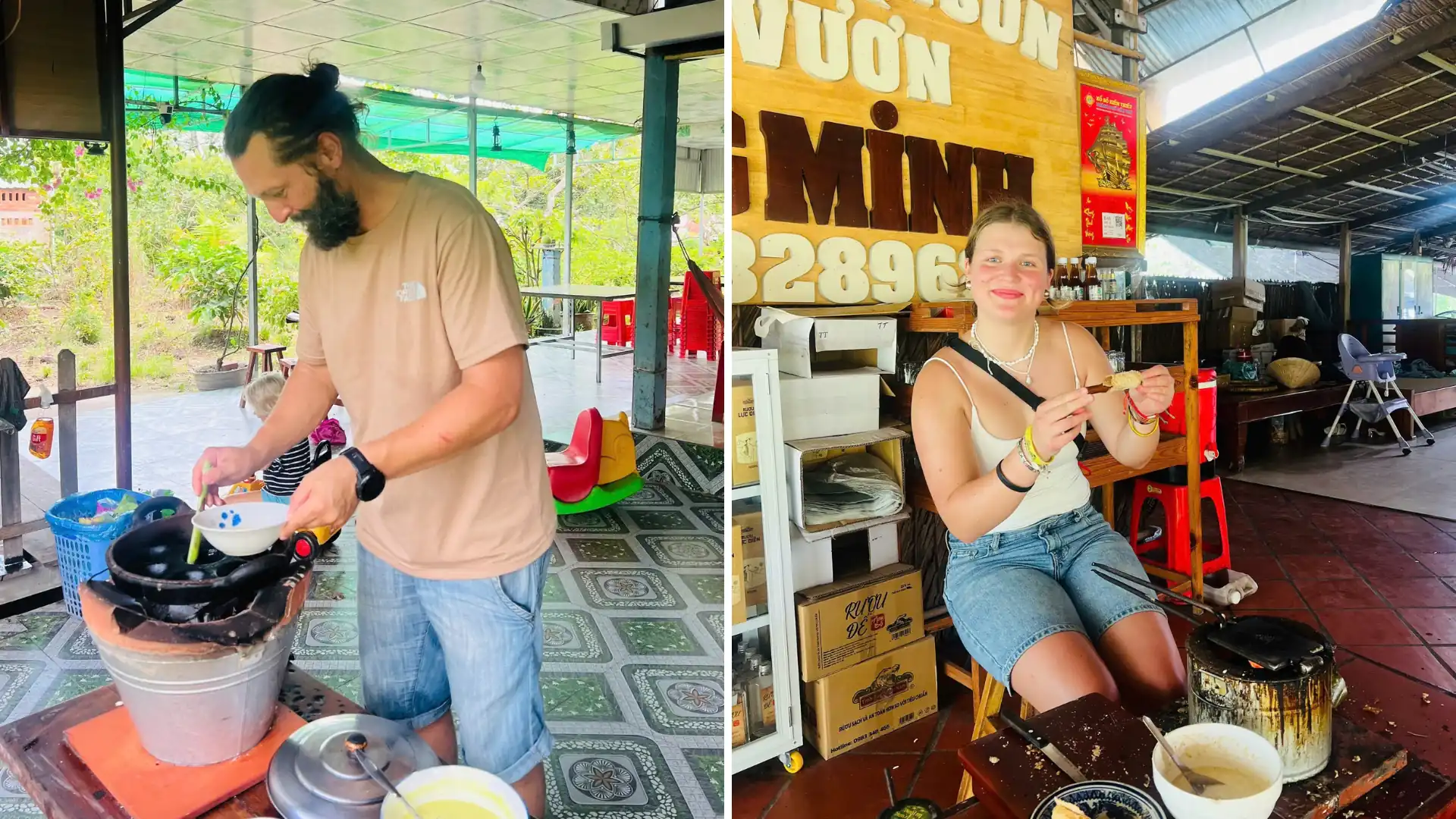
Flying Snakehead Fish Performance
Son Islet in Can Tho features one of the Mekong Delta’s most captivating shows: flying snakehead fish. When the keeper taps on a keng (metal container), hundreds of trained fish surge to the surface and launch themselves into the air to catch food, creating a spectacular synchronized display.
What makes it special: This isn’t natural behavior – it’s the result of years of patient training, showcasing a unique partnership between keeper and fish that exists nowhere else in Vietnam.
Time needed: 30-45 minutes for the performance, plus 60-90 minutes if dining.
Duck Massage Experience
You hold duck food in your hand or on your feet, and eager ducks peck at it, creating a tickling sensation that’s surprisingly relaxing and absolutely hilarious.
How it works:
- Staff welcome you and explain duck interaction basics
- Visit friendly ducks
- Ducks nibble food from your palms/toes for 30 minutes
- Gentler than fish massage, with more laughter
Group considerations: Perfect for solo travelers, couples, families, and groups. Kids absolutely love it.
Time needed: 30-45 minutes for ducks only, 60-90 minutes with fruit garden exploration.
Other Memorable Experiences
- Pop Rice Making: Watch (and help) make “cốm rang,” a puffed rice snack that’s been a Mekong Delta treat for generations. The process involves a heated cylindrical drum and produces a satisfying “pop!”
- Don Ca Tai Tu Performances: If you’re lucky, you’ll catch a performance of this UNESCO-recognized traditional Southern folk music. The melodies are haunting and beautiful, typically performed on traditional instruments like the moon lute and zither.
- Village Walking: Simply wandering the narrow paths between orchards and homes offers countless moments of unexpected beauty – a grandmother weaving fish traps, children playing by the water, boats loaded with produce headed to market.
Watch pop rice making and enjoy soulful folk music on Con Son Islet
Food on Son Islet: What to Expect
Most tour packages include lunch at a local family’s home. This isn’t restaurant food – it’s home cooking at its finest, featuring:
- Fresh fish: Often caught that morning from the family’s own fish farm, prepared grilled, steamed, or in caramelized fish sauce
- River snails: Prepared in various ways, including the beloved Southern snail salad
- Vegetables: Fresh, local, and abundant – from morning glory to bitter melon
- Rice: Always present, usually fragrant jasmine rice from the Delta
- Unique dishes: Depending on the family, you might try grilled field rat (chuột đồng) – a delicacy in the Mekong Delta – or various fish preparations you won’t find elsewhere
- Fruit for dessert: Obviously, the fruit is spectacular
- Drinks: Fresh coconut water, herbal teas, and sometimes local rice wine
For vegetarians: Notify your guide or tour operator in advance. Most families can accommodate vegetarian diets, though options will be more limited. The fresh vegetables and fruit compensate, though.
Food safety: Community tourism families maintain clean kitchens and serve food that meets Vietnamese hospitality standards. Typical traveler stomach issues are rare, though if you have a sensitive system, you might bring probiotics as a precaution.
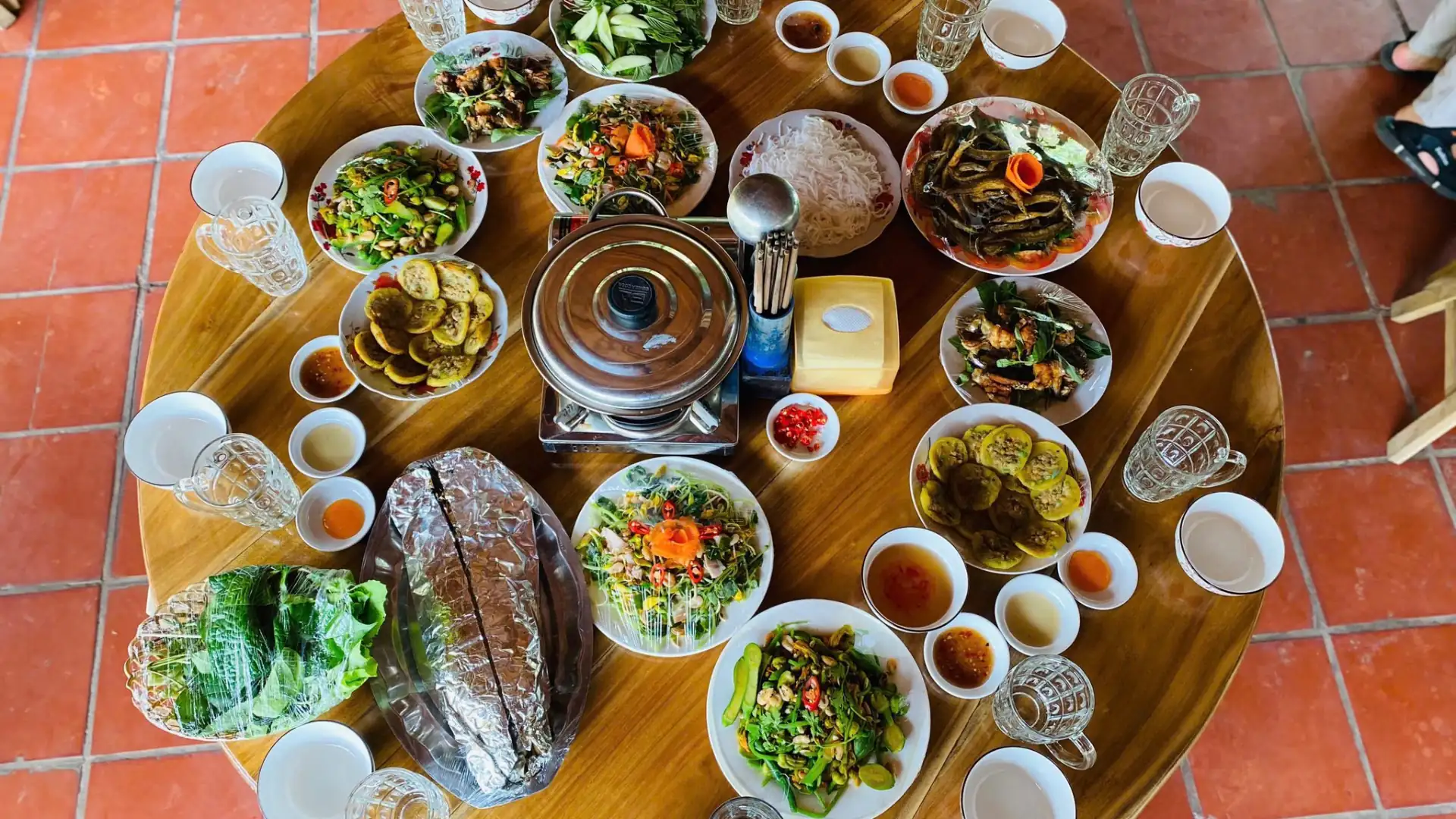
Practical Tips for Your Smooth Son Islet Visit
What to Pack
Essential:
- Comfortable walking shoes: Not flip-flops. The paths can be uneven, muddy, or have exposed roots.
- Sun protection: Hat, sunglasses, SPF 50+ sunscreen. The tropical sun is intense.
- Mosquito repellent: Essential, especially if visiting orchards or staying near water.
- Cash: Small denominations of Vietnamese Dong. There are no ATMs on the islet.
- Camera/phone: You’ll want it. Consider a waterproof case.
- Light, breathable clothing: Cotton or moisture-wicking fabrics. Long, loose pants and sleeves protect from sun and mosquitoes.
- Raincoat or umbrella: Even in dry season, tropical showers happen.
Optional but useful:
- Reusable water bottle
- Hand sanitizer
- Small daypack
- Personal medications
Costs Breakdown
- Ferry crossing: 15,000-20,000 VND each way
- Orchard entrance (with unlimited fruit): 60,000 VND
- Individual activities: 20,000-50,000 VND each
The Con Son Islet tour includes all transportation and entrance fees to the islet’s top attractions, helping you enjoy a seamless, worry-free experience while discovering the best of this hidden gem.
Booking Your Visit
Critical advice: Contact MekongSmile in advance. Son Islet has limited capacity and aims to provide quality experiences rather than cramming in visitors. Showing up without booking, especially on weekends or during peak season, often means disappointment.
Booking options:
- Through MekongSmile: This is easiest for international travelers.
- Direct with families: If you speak Vietnamese or have a local contact, you can arrange directly for a more personalized (and often cheaper) experience.
- Through your hotel: Many Can Tho hotels can arrange tours on your behalf.
Reserve early through MekongSmile to ensure your Son Islet trip goes perfectly smooth
What to communicate:
- Number of people in your group
- Preferred date and time
- Dietary restrictions
- Specific interests (photography, cooking, fruit focus, etc.)
- Language needs (English-speaking guides cost slightly more but are worth it)
Cultural Etiquette and Responsible Tourism
Keep It Clean: There’s no municipal waste collection, so bring a bag for your trash and dispose of it in Can Tho. Use refillable water bottles, decline plastic bags, and pick up litter on paths – locals notice and appreciate this.
Respect for Hosts:
- Remove shoes before entering homes
- Ask permission before photographing people, especially children
- Try foods offered with enthusiasm
- Don’t touch fruit unless invited
- Stay on paths opened to tourists
Support the Community
- Buy fruit and products directly from families
- Tip guides 50,000-100,000 VND for good service
- Consider buying extra fruit – it’s inexpensive for you but meaningful income for farmers
- Leave honest reviews and share responsible travel practices with other visitors
Photography Ethics: Always ask permission before photographing people. Be respectful in homes, don’t pressure anyone to pose, and consider sharing photos with families if possible – many appreciate seeing themselves through visitors’ eyes.Retry
Combining Son Islet with Other Can Tho Attractions
Classic Combination in Can Tho Tour
Free Itineraries
Morning: Binh Thuy Ancient House (beautiful French-Vietnamese architecture)
Late morning: Ong Temple (Chinese-Vietnamese cultural site)
Afternoon: Son Islet
Evening: Don ca tai tu performance at a cultural center
Other Nearby Worth-Visiting Attractions
- My Khanh Ecotourism Village: Similar concept to Son Islet but larger and more developed
- Truc Lam Phuong Nam Zen Monastery: Peaceful Buddhist temple with beautiful gardens
- Can Tho Bridge: Southeast Asia’s longest cable-stayed bridge, impressive at sunset
End your journey with breathtaking views from the iconic Can Tho Bridge
Book your authentic Son Islet Tour
Get your free personalized Mekong itinerary - Leave your info and our local expert will respond within 5 minutes to help you design your most authentic trip:
Frequently Asked Questions (FAQs) about Son Islet
What is Son Islet?
A 70-hectare agricultural island in the Hau River near Can Tho, home to fewer than 100 families. It’s a community-based tourism destination offering authentic Mekong Delta experiences through fruit orchards, floating fish farms, and traditional activities.
What is the best time to visit Son Islet?
April to July for peak fruit season (rambutans, longans, mangoes). However, Son Islet is worth visiting year-round with different fruits available each season. Morning tours (9 AM) are cooler; afternoon tours (2 PM) offer better lighting and stork viewing.
Do I need to book Son Islet Tour in advance?
Yes. Son Islet limits daily visitors. Book 1-2 weeks ahead for peak season/weekends, or 3-5 days for regular weekdays. Contact tour operators, your hotel, or families directly.
Can I bring a motorbike to Son Islet?
Not recommended. While possible, paths are narrow, unpaved, and difficult to navigate. Walking and small boats are the practical ways to explore.
Is the fruit really unlimited in Son Islet?
Yes! For ~60,000 VND entrance, eat as much ripe fruit as you want. No weighing or counting. You can purchase additional fruit to take home at reasonable prices.
What is the “flying snakehead fish” performance?
A unique Can Tho tradition where trained snakehead fish leap dramatically from the water on command. It’s entertaining and showcases the relationship between farmers and their fish.
Is Son Islet suitable for families with children?
Absolutely! Kids love picking fruit, feeding fish, making cakes, crossing monkey bridges, and boat rides. Best for ages 4-10, but manageable for all ages. Book private tours for flexibility.
Can I stay overnight on Son Islet?
Yes, but limited. A few families offer basic homestays (200,000-300,000 VND per person with meals). Expect simple rooms, shared bathrooms, and fans. Most visitors stay in Can Tho hotels for better comfort.

